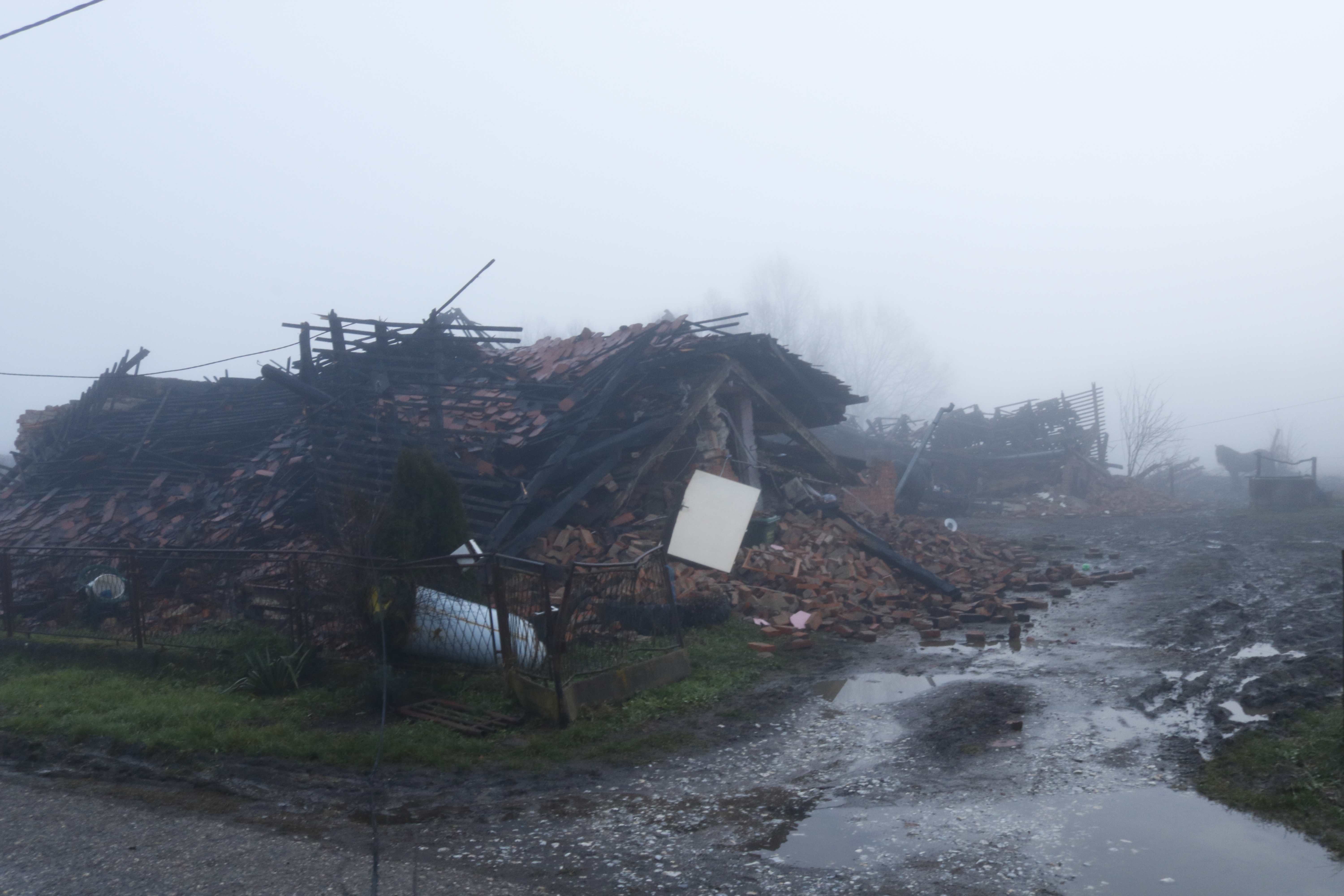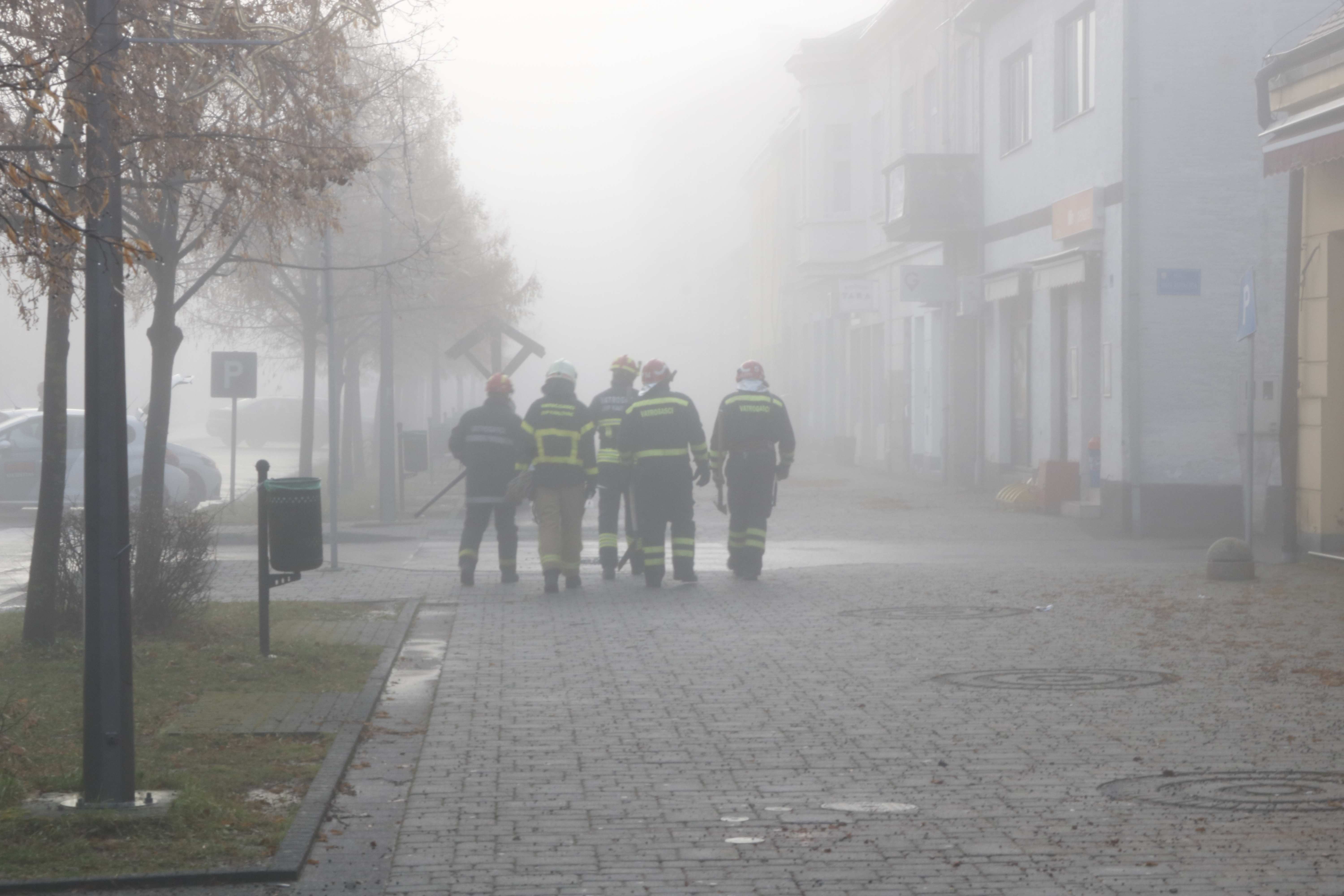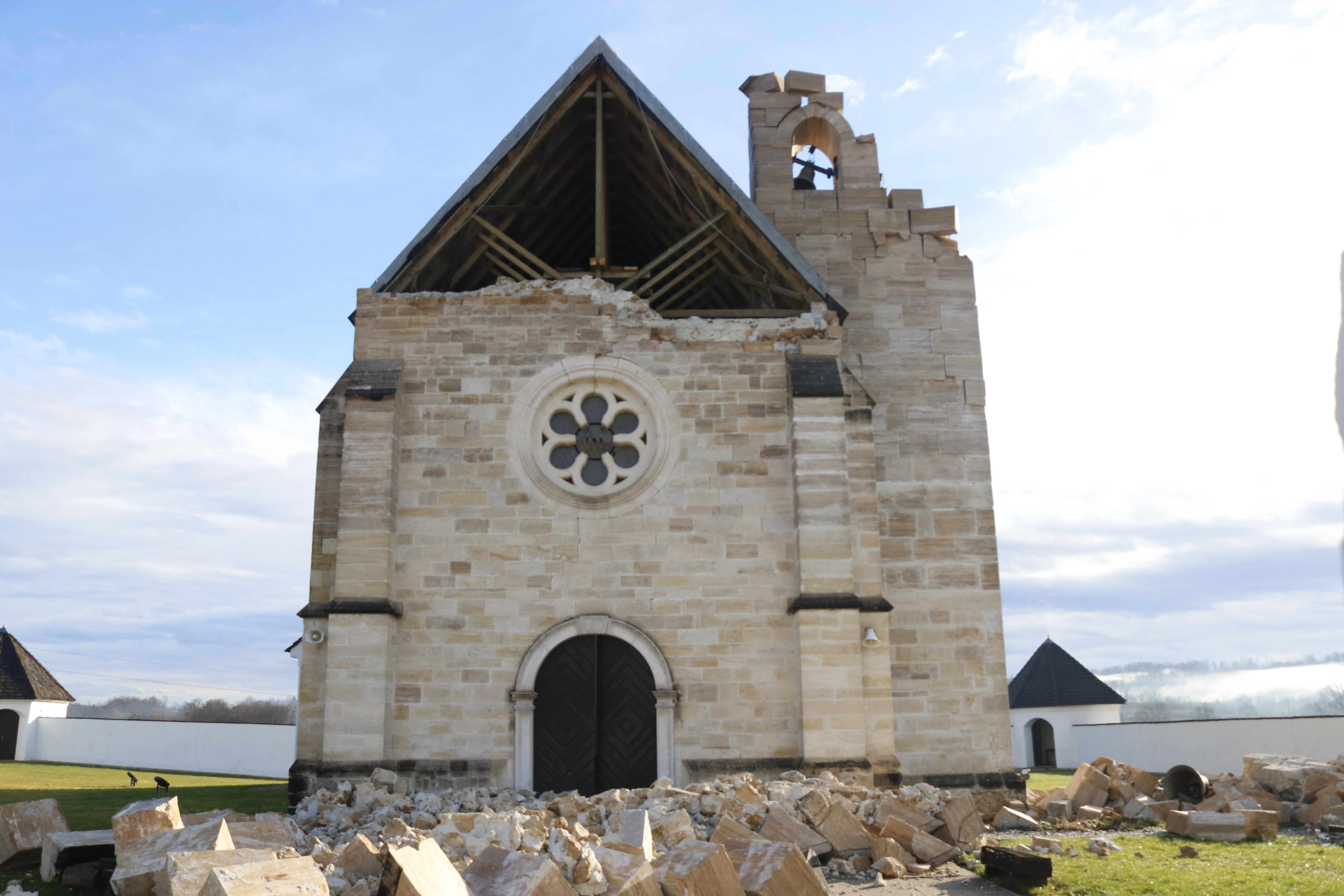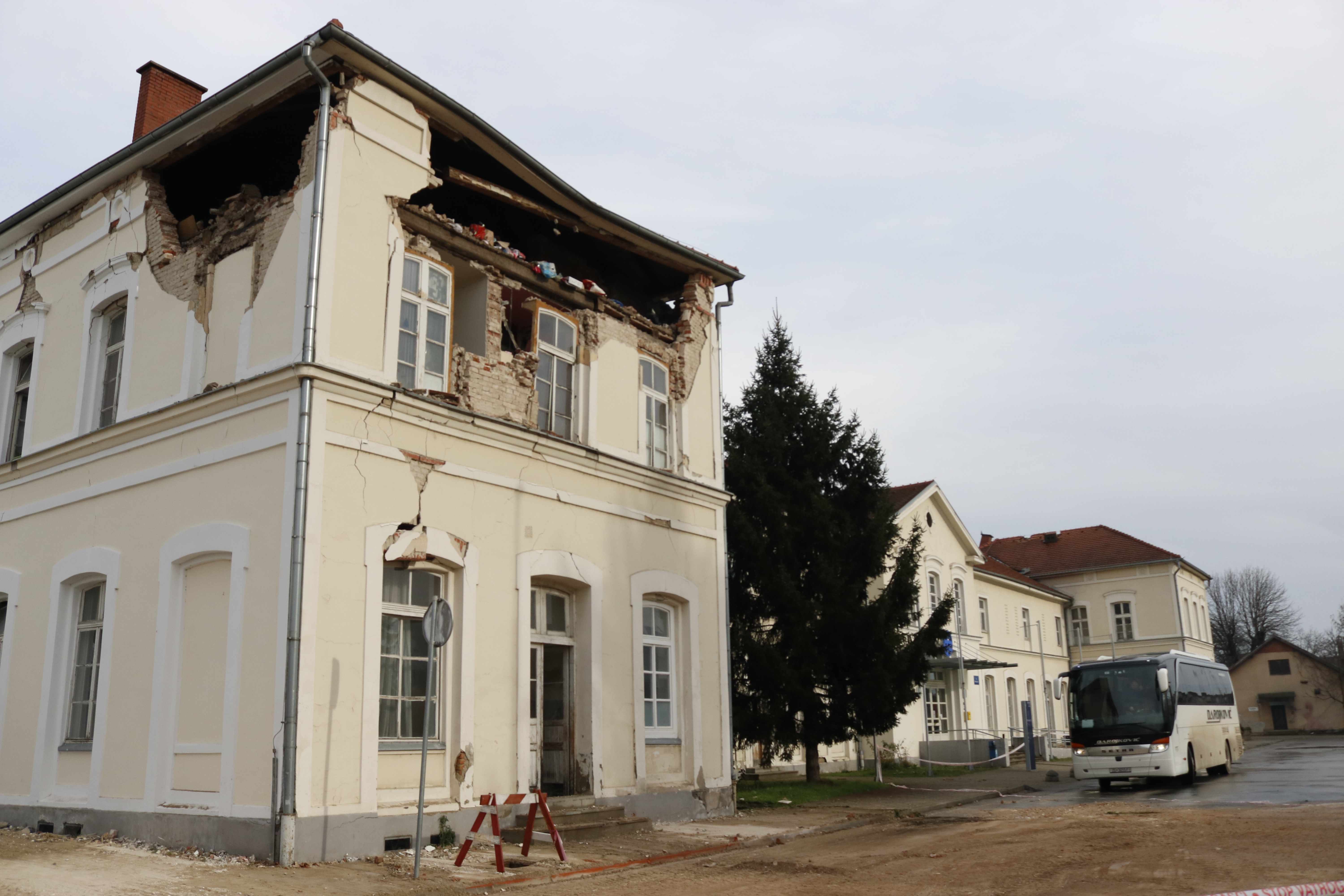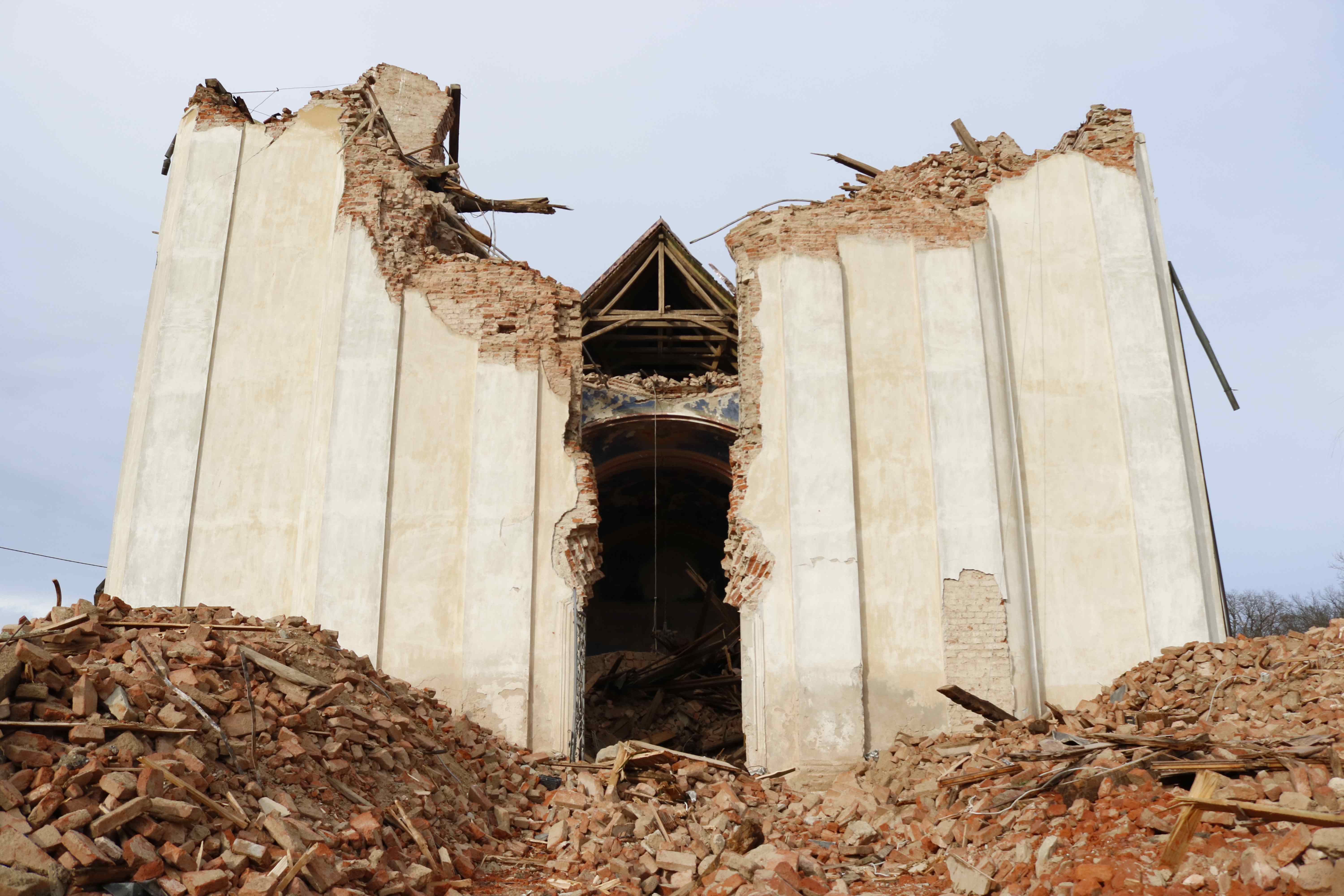Magnitude 4.0 Earthquake Hit Petrinja and Sisak Area, Felt in Zagreb
February 18, 2021 – A rather strong earthquake hit the Petrinja and Sisak area today at around 1:08 pm. It was also felt in other parts of Central Croatia, mostly in Zagreb.
Today, February 18, 2021, at 1:08 pm, seismologists from the Croatian Seismological Service recorded a relatively strong earthquake with the epicenter not far from Petrinja, near Glinska Poljana. The magnitude of the quake was 4.0 according to Richter and the intensity in the epicenter of the 5th degree of the EMS scale.
The European-Mediterranean Seismological Centre (EMSC) estimates the earthquake's magnitude was 4.2. The epicenter was 17 km northwest of Sisak and 45 km from Zagreb, at a depth of 2 km.
Map of felt reports received so far following the #earthquake M4.2 in Croatia 40 min ago pic.twitter.com/v5o3qNRdMx
— EMSC (@LastQuake) February 18, 2021
Citizens from all over central Croatia report they felt the earthquake – from Zagreb, Karlovac, Velika Gorica, Sisak, Petrinja, Varaždin – and even from Ptuj in Slovenia. In just a few minutes, the EMSC collected thousands of earthquake reports. According to citizens' reports, the earthquake was a short but strong blow and waving.
"At first, it seemed to rumble, and then it shook for a few seconds," said one witness.
"About five seconds of good shaking in the Maksimir area. Another intensive aftershock," said another witness.
"A hit, then prolonged rocking, six to seven seconds duration," are some more of the comments from witnesses.
As Index reports, the earthquake was felt even during the Government session in the National and University Library in Zagreb.
"Here, we have just felt an earthquake in the National and University Library," Prime Minister Andrej Plenković said during the session.
After this first blow, two more slight tremors hit Sisak and its surroundings, magnitudes 2.3 and 1.5 on the Richter scale. The EMSC reports that these are all aftershocks of the 6.3 magnitude earthquake that hit Petrinja and Sisak-Moslavina County on December 29, 2020, and left many damages.
To read more news from Croatia, follow TCN's dedicated page.
EP Adopts Resolution on Mitigating Consequences of Croatia Earthquakes
ZAGREB, 22 January, 2021 - Members of the European Parliament on Thursday adopted by a vast majority a resolution on mitigating the consequences of last year's earthquakes in Croatia, asking that all available EU instruments be used to help the country.
The resolution was supported by 677 MEPs while five voted against and one abstained.
Participating in drafting the resolution, initiated by Croatian MEP Valter Flego, were all Croatian members of the European Parliament.
The draft resolution "calls on the Commission, in cooperation with the EU and Croatian institutions, to devise a swift way of distributing the necessary financial and other assistance to ensure a speedy recovery of the affected areas."
In approving financial aid, the Commission is called upon to take account of the fact that Croatia is at the same time also dealing with the coronavirus pandemic.
Croatia is called upon to prioritise "renovation in its recovery and resilience plan, devoting particular attention to comprehensive preventative renovations that ensure the highest seismic standards for housing and buildings at greatest risk in its most earthquake-prone regions."
Croatia is called upon to carefully monitor post-earthquake reconstruction to make sure the highest seismic standards are ensured for all buildings and infrastructure.
The document says that the reconstruction process should be carried out as swiftly as possible, respecting transparency, applying best professional practices and taking account of the demographic aspect. Special focus should be placed on building the basic infrastructure that was lacking prior to the earthquake and access to basic needs and services should be promptly re-established in all parts of the affected areas.
The Commission is called upon to extend the 18-month time limit for the use of funds from the European Solidarity Fund in the event of a devastating earthquake.
The document also stresses the importance of prioritising residents of the affected areas for COVID-19 vaccination and encourages the Croatian government to implement the decision it has announced to redirect a significant proportion of its vaccine supply to Sisak-Moslavina County.
The resolution also welcomes the decision of EU member states to give part of their vaccination supplies to Croatia.
Last year Croatia was struck by two strong earthquakes that were followed by a number of aftershocks. On 22 March, a 5.5 earthquake shook Zagreb and two adjacent counties, killing a 12-year-old girl and damaging over 26,000 buildings. On 29 December, a 6.2 earthquake struck Sisak-Moslavina County, killing seven people and demolishing over 30,000 buildings.
Croatian Geological Survey: Earthquakes Caused By Activation of Two Vertical Fault Systems
January 5, 2021 – The Croatian Geological Survey issued a statement on the recent earthquakes in Petrinja, Sisak, Glina, and the surrounding areas. To their knowledge, the activation of two mutually vertical fault systems caused the earthquakes.
Here is the entire press release of the Croatian Geological Survey (HGI).
The active tectonics of the entire area of Croatia, including the wider epicentral area of Pokupsko-Petrinja-Sisak, is caused by the continuous movement of the Adriatic lithospheric microplate (Adria) to the north. Therefore, in the upper parts of the Earth's crust, great strains occur at the contact of the Dinarides and the Pannonian Basin. When the strain reaches a critical level, individual faults from that system are (re)activated. There is a sudden movement of kilometers blocks of crust with dimensions of several hundred to thousands of cubic kilometers. As a result, a massive amount of energy is released, and earthquakes occur.
According to preliminary geological analyzes of Croatian Geological Survey's scientists and experts, based on geological maps, numerous field data published in the media, field prospecting, available seismological, and preliminary satellite data, the earthquake that hit Petrinja and its surroundings on December 28, 2020, activated the fault system in the underground of the broader area of Sisak, Petrinja, and Glina. (photo below)
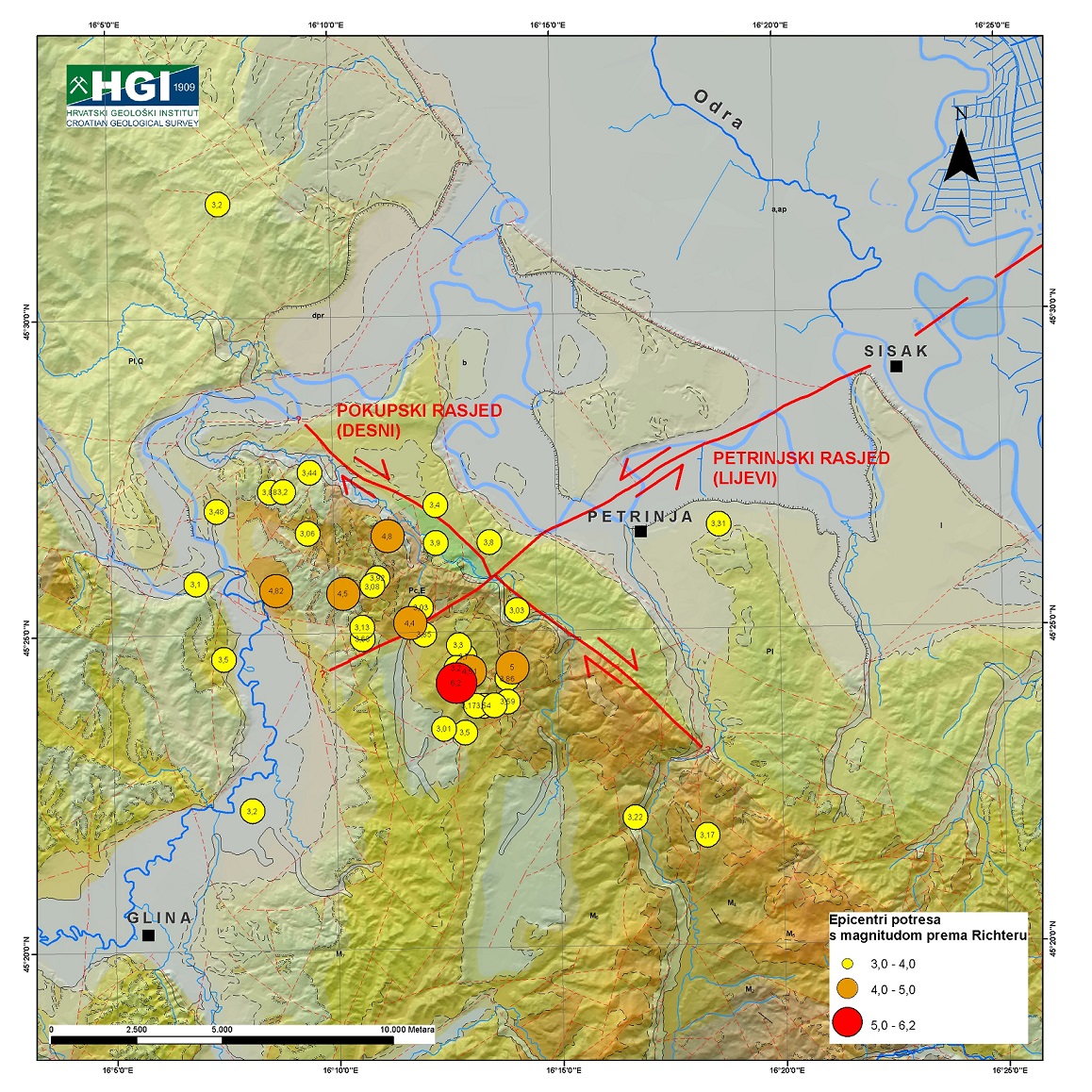
Geological map of the Petrinja and Sisak area with highlighted main faults from activated fault systems that caused earthquakes on 28 and 29 December 2020. / Croatian Geological Survey
It is evident that it is the intersection of longitudinal and transverse faults on the extension of the Dinarides. Both fault systems consist of multiple faults with horizontal wing movement (strike-slip). One is the lesser-known fault, which on this occasion is marked as the left Petrinja fault, and the other is the better-known right Pokupsko fault. Such a fault system is a textbook example of deformations that occur in rock due to compression stress along the north-south axis.
Both fault systems are shown on the Basic Geological Map of the Republic of Croatia 1: 100,000, page Sisak, prepared by the Institute of Geology HGI (Pikija, 1987), and on the overview geological map of the Republic of Croatia 1: 300,000 (HGI, 2009). All geological maps covering the territory of the Republic of Croatia are available on request on the Croatian Geological Survey's website.
Due to a large amount of released energy during the movement of fault wings, ruptures in the rocks were manifested on the surface of the terrain, so in the wider epicentral area along fault lines, we find various surface manifestations of this movement and vibration of the terrain: open cracks and paraclasses, fluid spills, sand volcanoes due to liquefaction in the Kupa and Sava river basins, deformations of the surface of the terrain and infrastructural line facilities, and numerous other, hitherto unusual phenomena for our area, which can also cause various subsequent geohazard events. Part of the deformation of the terrain between Petrinja and Glina is probably due to the collapse of the underground corridors of the brown coal mines that operated in the first half of the 20th century and were not adequately rehabilitated (buried).
More data and details on the activated fault system will be available upon completing field research by the Croatian Geological Survey's teams.
Dr. sc. Tvrtko Korbar, scientific advisor of the Croatian Geological Survey
For more on the Petrinja earthquake and to see how you can donate money, food, humanitarian, sanitary and material aid, follow our dedicated section.
Petrinja Area Hit by 374 Tremors, Including 109 in Past Two Days
ZAGREB, 2 January, 2021 - The Petrinja area has been hit by 374 tremors since 28 December, including 109 over the past two days, the Zagreb Faculty of Science Department of Geophysics said on Saturday.
The first earthquake was registered at 6.28 a.m. on 28 December, measuring 5 on the Richter scale.
The strongest one struck Petrinja, Glina and Sisak at 12.19 p.m. on 29 December, measuring 6.2.
By 31 December, the area was hit by 265 tremors with magnitudes above 1 on the Richter scale.
Sixty-nine tremors were registered on 1 January and another 40 by 2 p.m. today.
Interview: HGSS Croatian Mountain Rescue Service in Petrinja
December 31, 2020 – Croatian firemen, army, police and medical workers worked through after the earthquake in Sisak Moslavina County on 29 December 2020. We wanted to get a sense of the demand on and the experiences of emergency services, so we spoke with Josip Granić. Head Of Service for HGSS, who was coordinating the efforts of the Croatian Mountain Rescue Service in Petrinja
This interview took place in Petrinja, just before 12.30pm on Wednesday 30 December 2020
Right now we have around 120 people here. Last night we sent some home. During the height of the operation, we had 192 members of the Croatian Mountain Rescue Service in Petrinja and the surrounding towns and villages. Firefighters and police from all over Croatia came. There are more than 200 army personnel here too.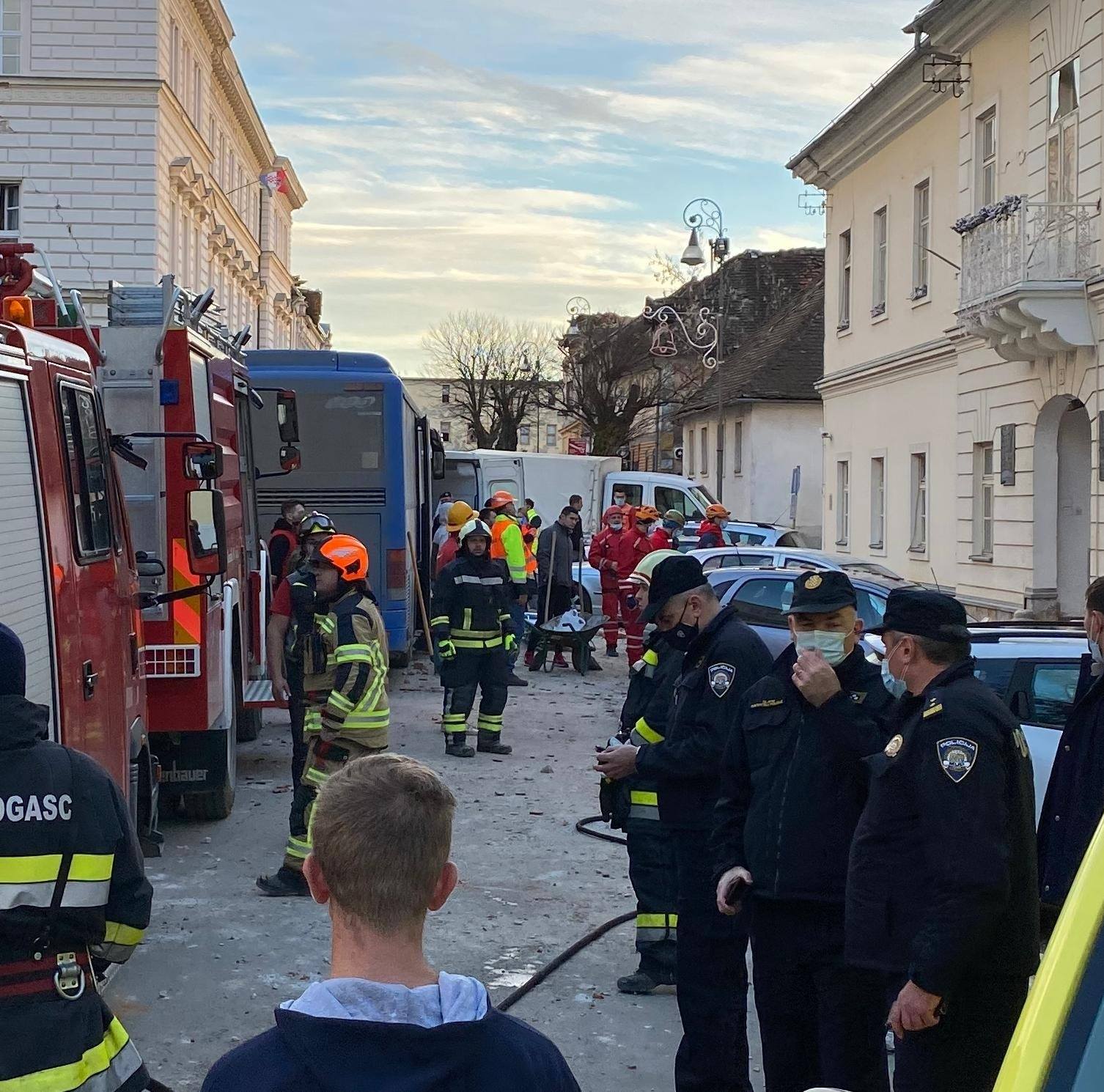
Because we are part of the operational team of the National Civil Protection, we were already here and involved in the response to the first earthquake. After yesterday's earthquake, I called each HGSS station across Croatia and asked them to prepare at least one vehicle and one team to come and join the Croatian Mountain Rescue Service in Petrinja. The first extra teams to arrive were from this county - Sisak and Novska. They got here around 2pm. Teams from Orebic, Peljesac and Split arrived maybe last, because of the large distance they had to travel. One team came by car, another came by helicopter.
What was the situation like for Croatian Mountain Rescue Service in Petrinja when the wider team first started to arrive after the second day's larger earthquake?
If I said it was chaos, that wouldn't be strong enough a word. The centre of the town was chaos. Everyone was busying themselves with responding – people were moving debris, firefighters were making their way through, ambulances and police moving through, people of the city in the streets helping out. The streets were filled with dust and smoke. You could hear the sounds of floors and roofs and buildings collapsing all around you.
What were the first undertakings for the Croatian Mountain Rescue Service in Petrinja?
Well, our first response was not only in Petrinja – we were immediately in some of the surrounding villages too. The very first thing we did was send in our search teams and the specially trained dogs we work with. We were instructed by locals. They told us which of the collapsed buildings were likely to have people trapped beneath them. We immediately found one person. It was in the town hall. One lady. The entire ceiling had fallen on top of her. Our colleague from Ogulin found her with his dog. The firefighters worked so fast, so hard to dig her out. They were excellent. It took four and a half hours to get her out. She was lucky. Unfortunately, we also found four more people who were already dead.
We saw quite a lot of volunteers. Who is organising them?
There are many different groups. Many local people were the first ones out on the streets, volunteering. Then, those from the immediate area came - four friends in a car, that kind of thing. |NGOs arrived next – veterans, charities and so on. Then, football fans from all over Croatia arrived. Supporters groups had organised coaches to bring themselves here. At first, nobody was organising them and it was a bit of a problem. They organised themselves. But, it was such chaos that some emergency vehicles, including search and rescue teams of Croatian Mountain Rescue Service in Petrinja, could not pass through the town. This is dangerous because, in search and rescue, your ability to respond quickly is vitally important. After dark, things began to run more smoothly. Many worked until 3am or 4am, then they were sent home. The ones who didn't arrive until much later in the night were incorporated into Civil Protection and assigned to work the next day in villages and towns outside Petrinja, where help was needed.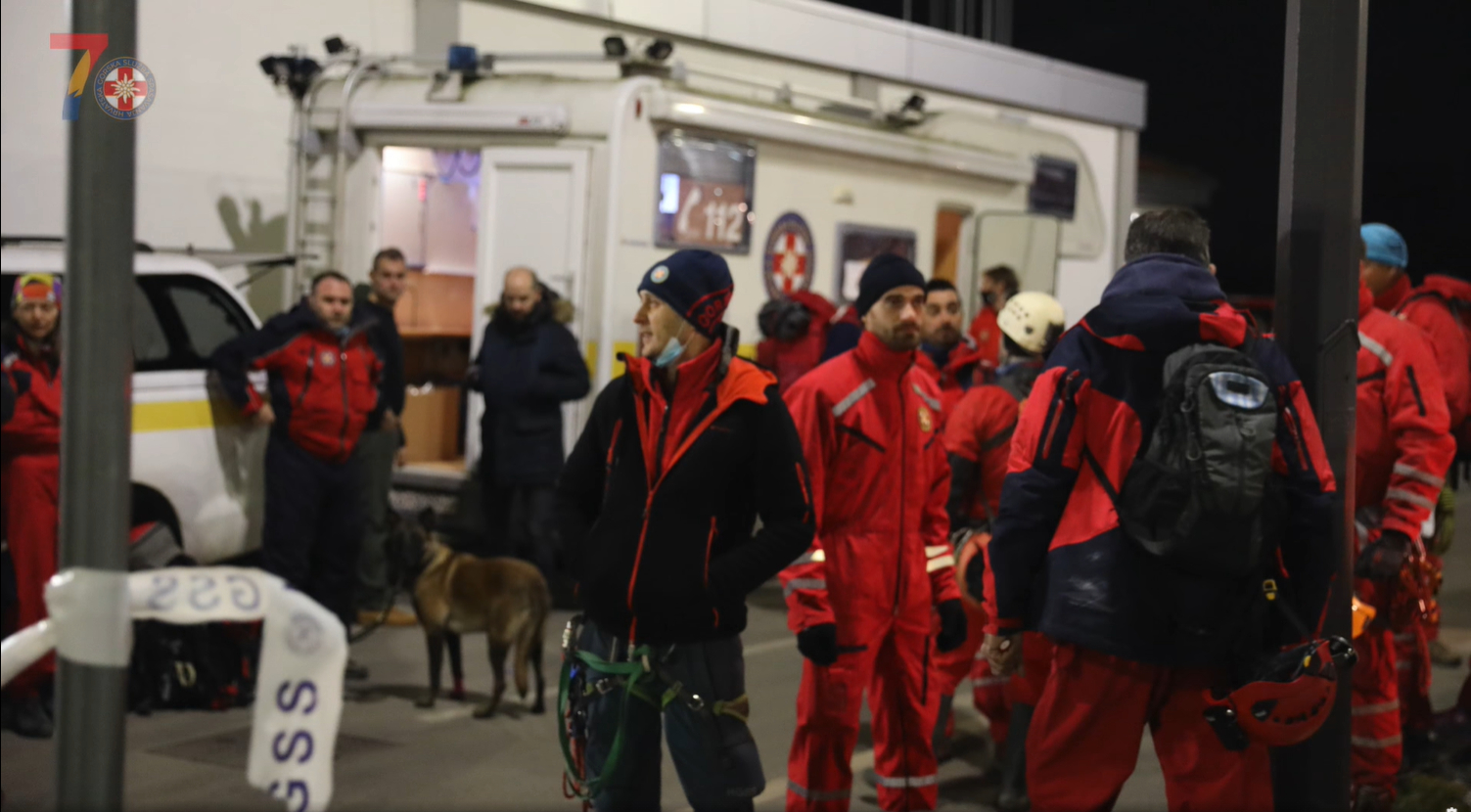
How has the demand on what you do changed since yesterday?
It hasn't changed that much. We have been visiting villages throughout the county as quickly as we can, searching for people who may be trapped. Some of these places have not yet been reached by the other emergency services, but they will get to them. We found another alive person who was trapped today. Since early in the morning we have searched 84 villages.
What advice would you give someone who wants to come here to volunteer?
Organise it first with Civil protection. If it is organised with them, then you know you won't be in the way and you will be going to where help is needed. If it's organised with them first, then come. There's a job for everyone who wants it here.
How different is the demand on emergency services in this earthquake compared to the earthquake in Zagreb in March 2020?
Well, our services were not requested during the Zagreb earthquake and a lot of that is because of the structural integrity of the buildings in Zagreb. Most were strong enough to survive that big earthquake. The ones which were damaged were only partially damaged. Many buildings in Zagreb were hardly damaged at all and so many people in Zagreb were relatively unaffected by that earthquake. Here, everyone is affected.
All images © HGSS
PHOTOS: Majske Poljane, Glina and Petrinja One Day After The Earthquake
December 31, 2020 – Total Croatia News visited Majske Poljane, Glina and Petrinja one day after the earthquake. It is difficult to find words to describe the devastation we saw. Perhaps pictures tell the story better
Majske Poljane

Majske Poljane is a rural community. Such was the devastation here, it was difficult to tell which of the destroyed buildings had yesterday been used for agriculture or if they'd been homes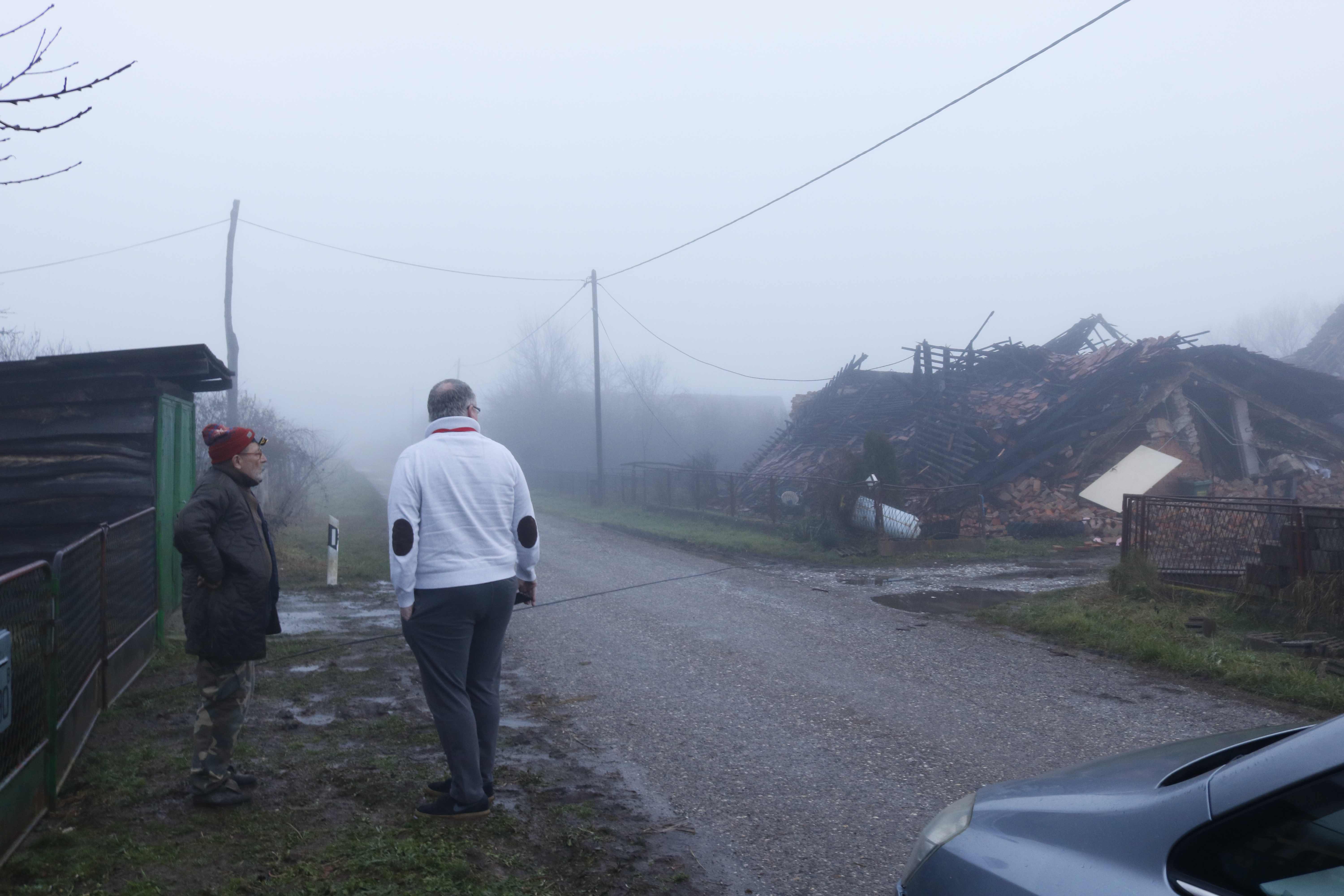
TCN's Paul Bradbury talks to Majske Poljane resident Vladimir who confirmed that, yes, the building across the lane had been a home, his neighbours had lived there just 24 hours earlier
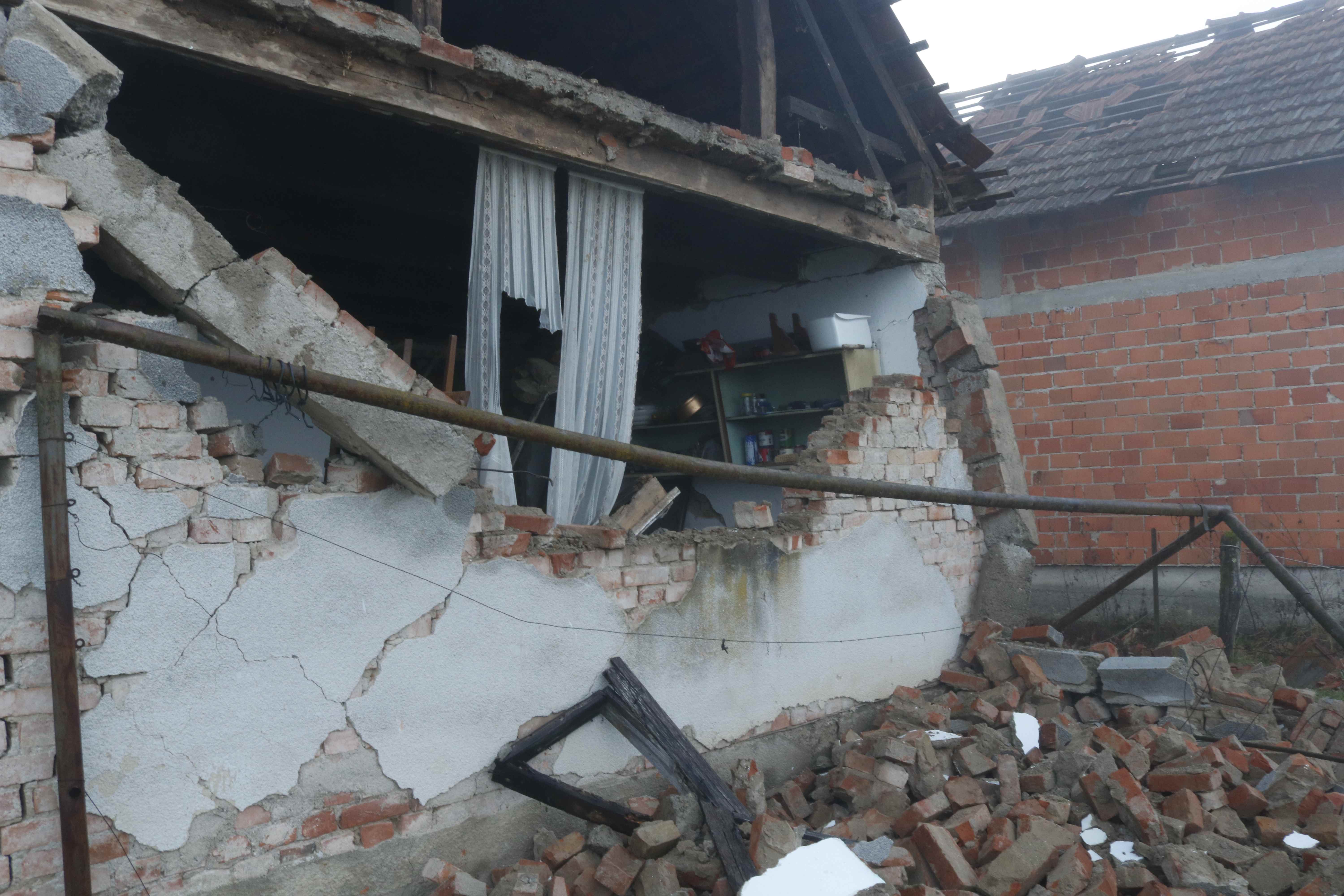
Doors of houses left ajar, windows collapsed, smashed and broken. Inside, you can see everyday lives, stopped suddenly, frozen in time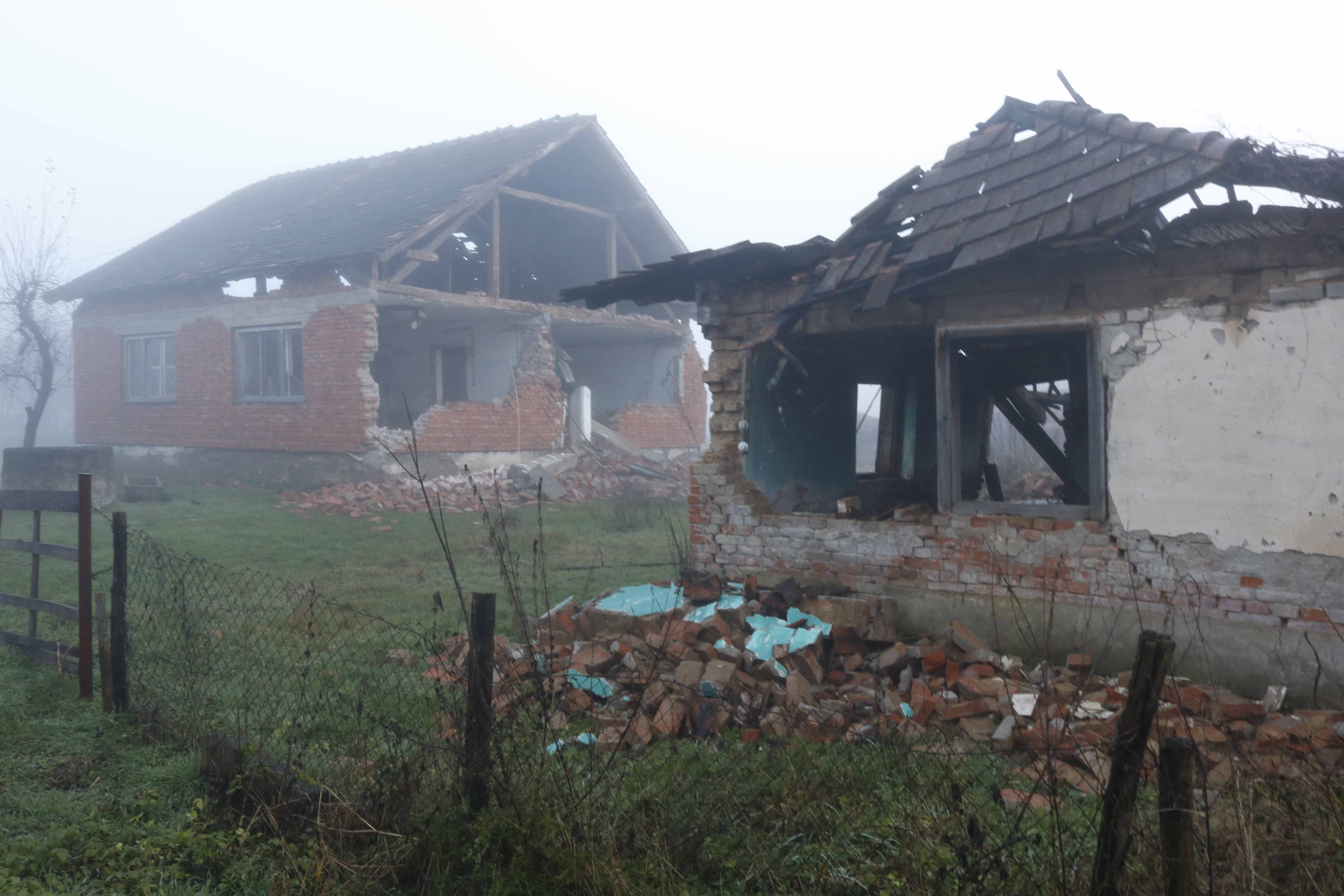
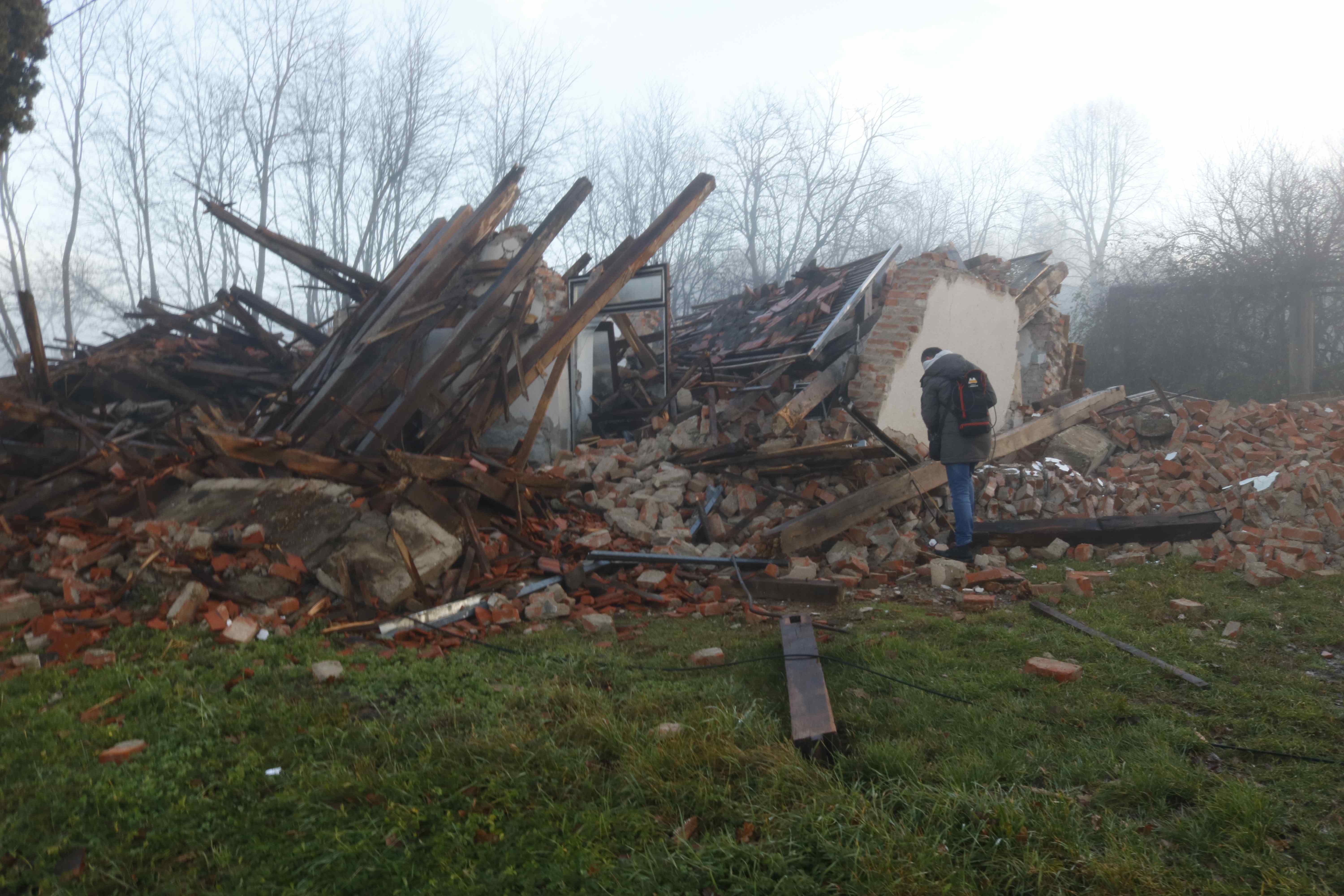
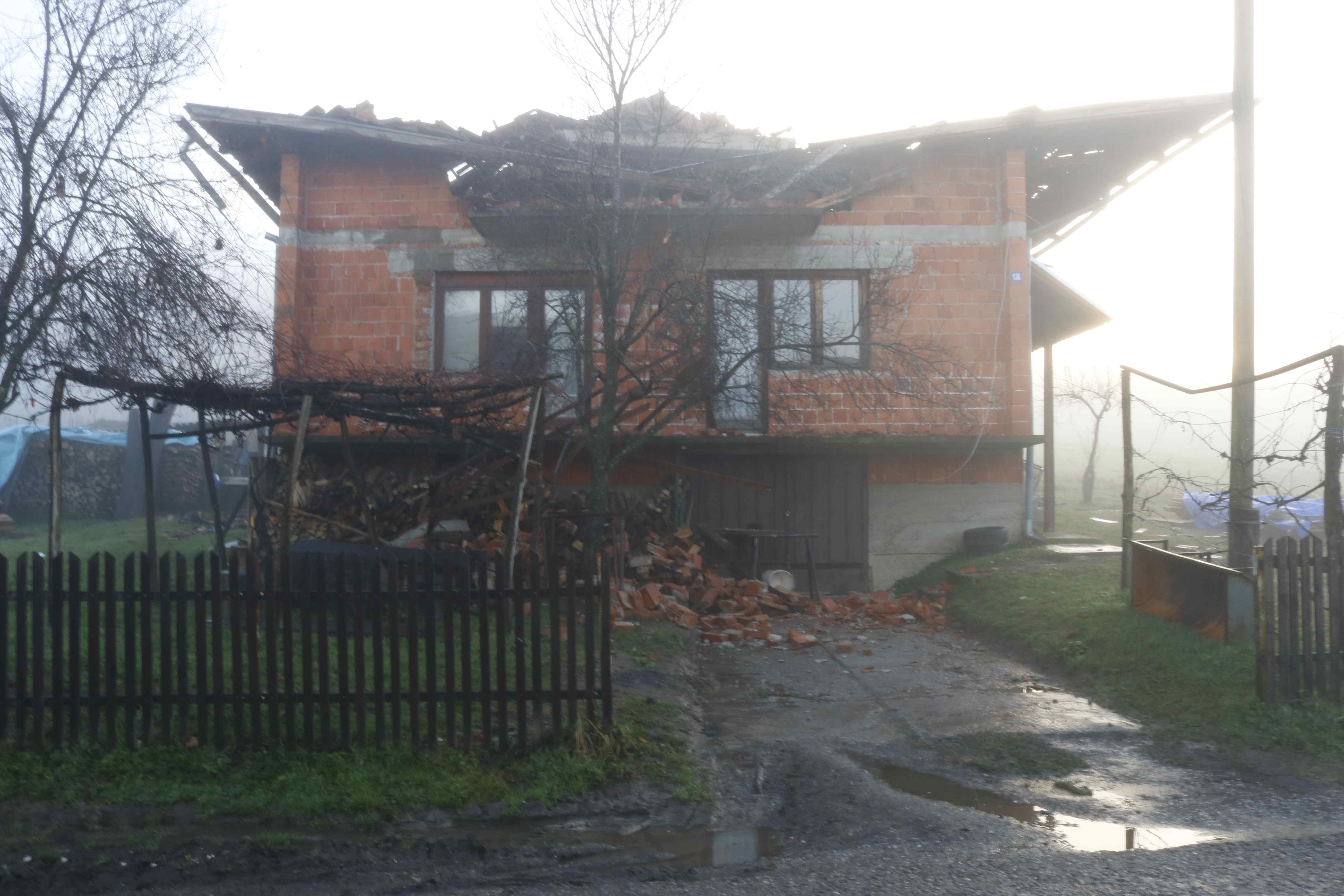
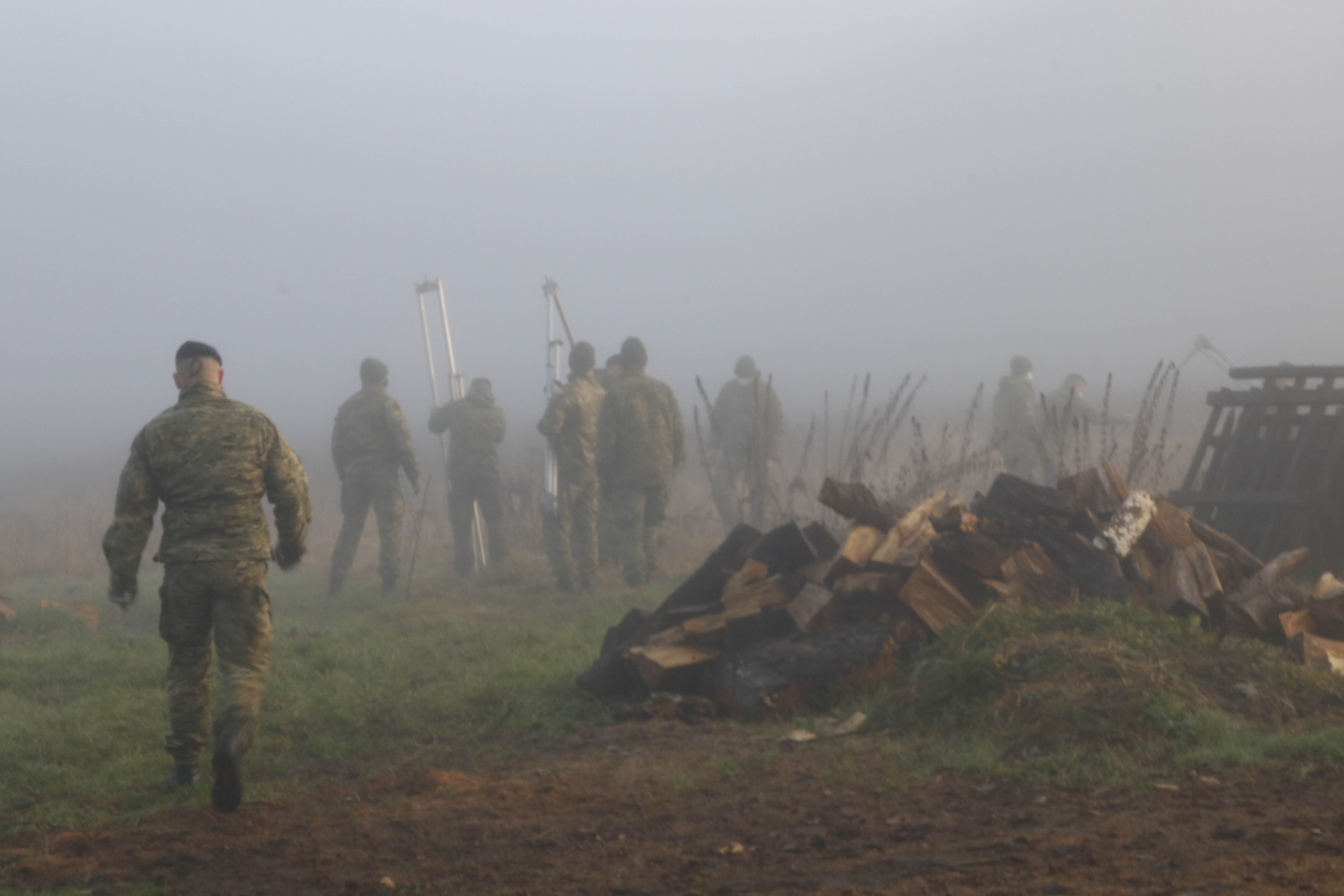
Croatian soldiers quickly constructing emergency shelters in the freezing fog of early morning. They came from all over Croatia. Unsure if their damaged houses were structurally safe, parents and children of Glina, surrounding villages and Petrinja stood in gardens and fields, keeping warm around fires. With no electricity, they cooked on barbecues.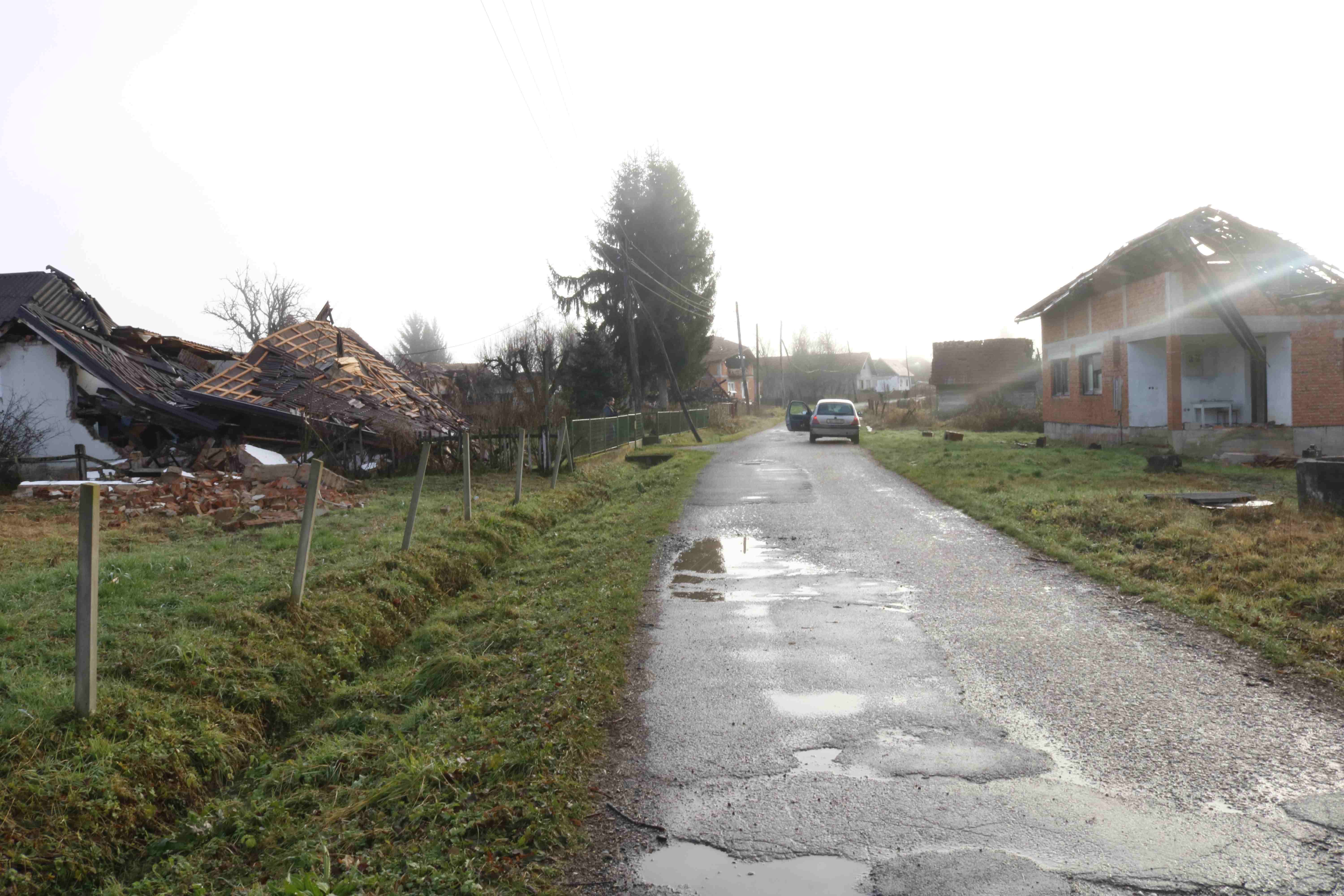
Majske Poljane seemed like the most silent place on earth. No single sound, not even bird song.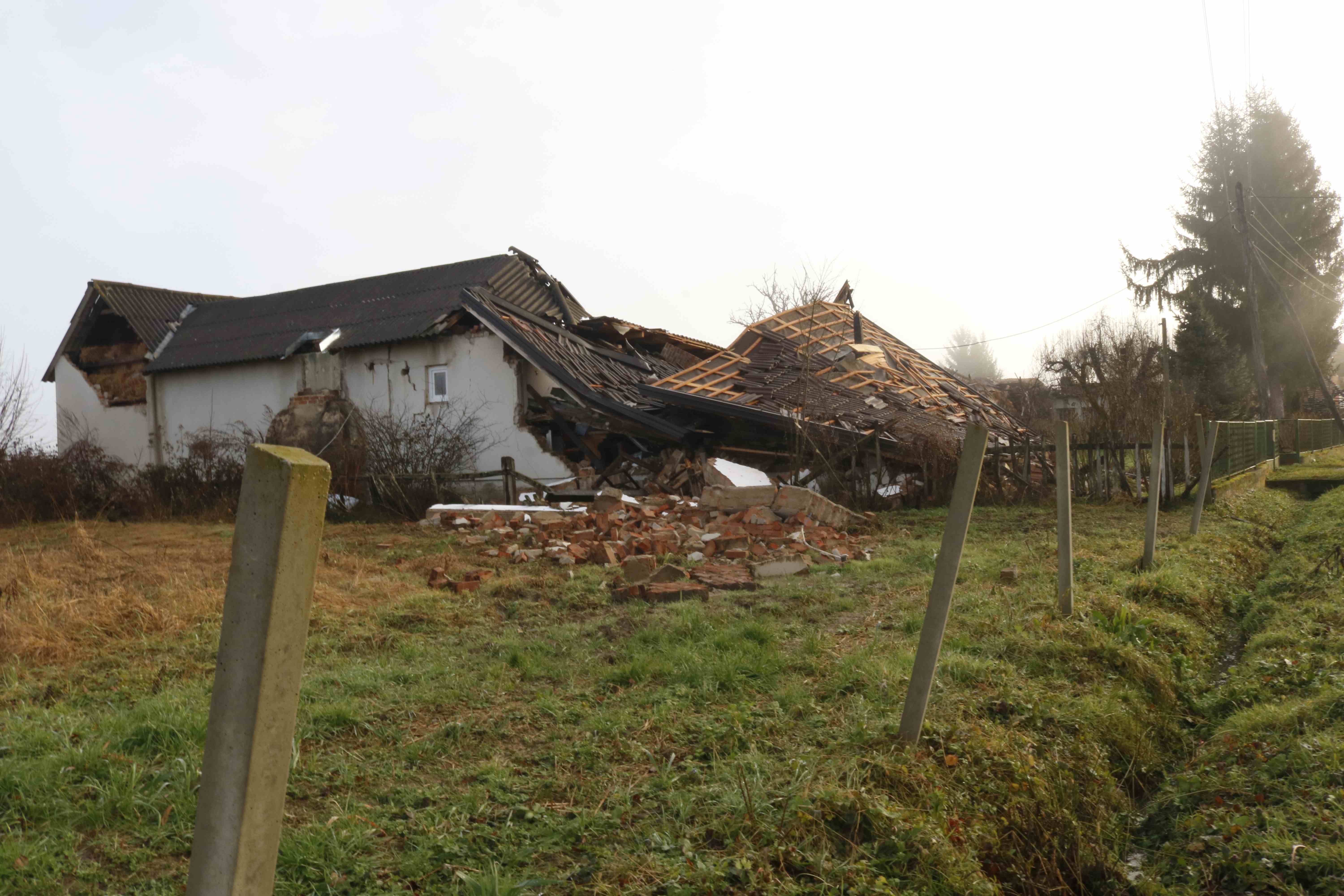
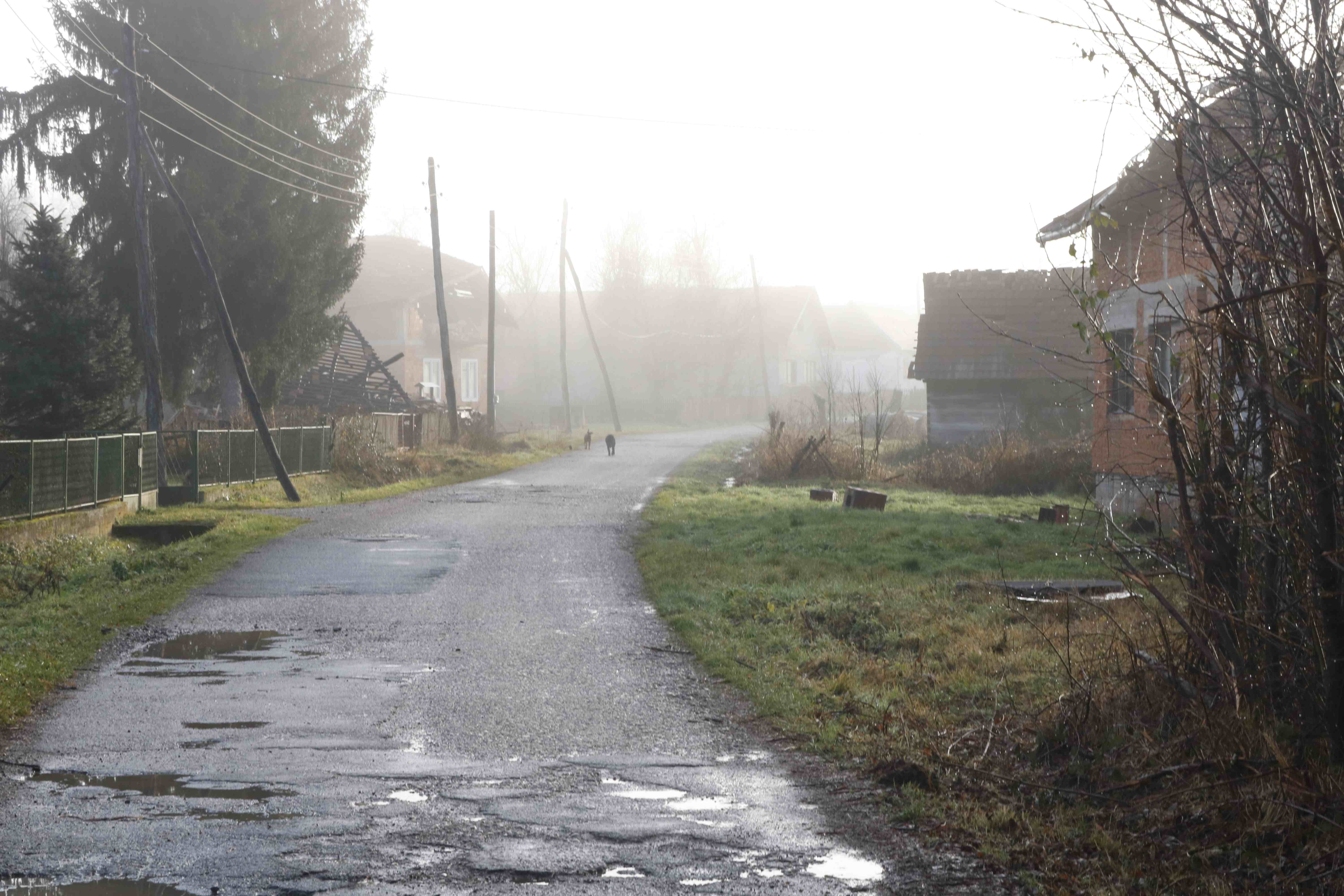
Even the three village dogs left behind padded around the wet road in silence
Glina

Croatian firefighters walk heavily through the mist-filled streets of Glina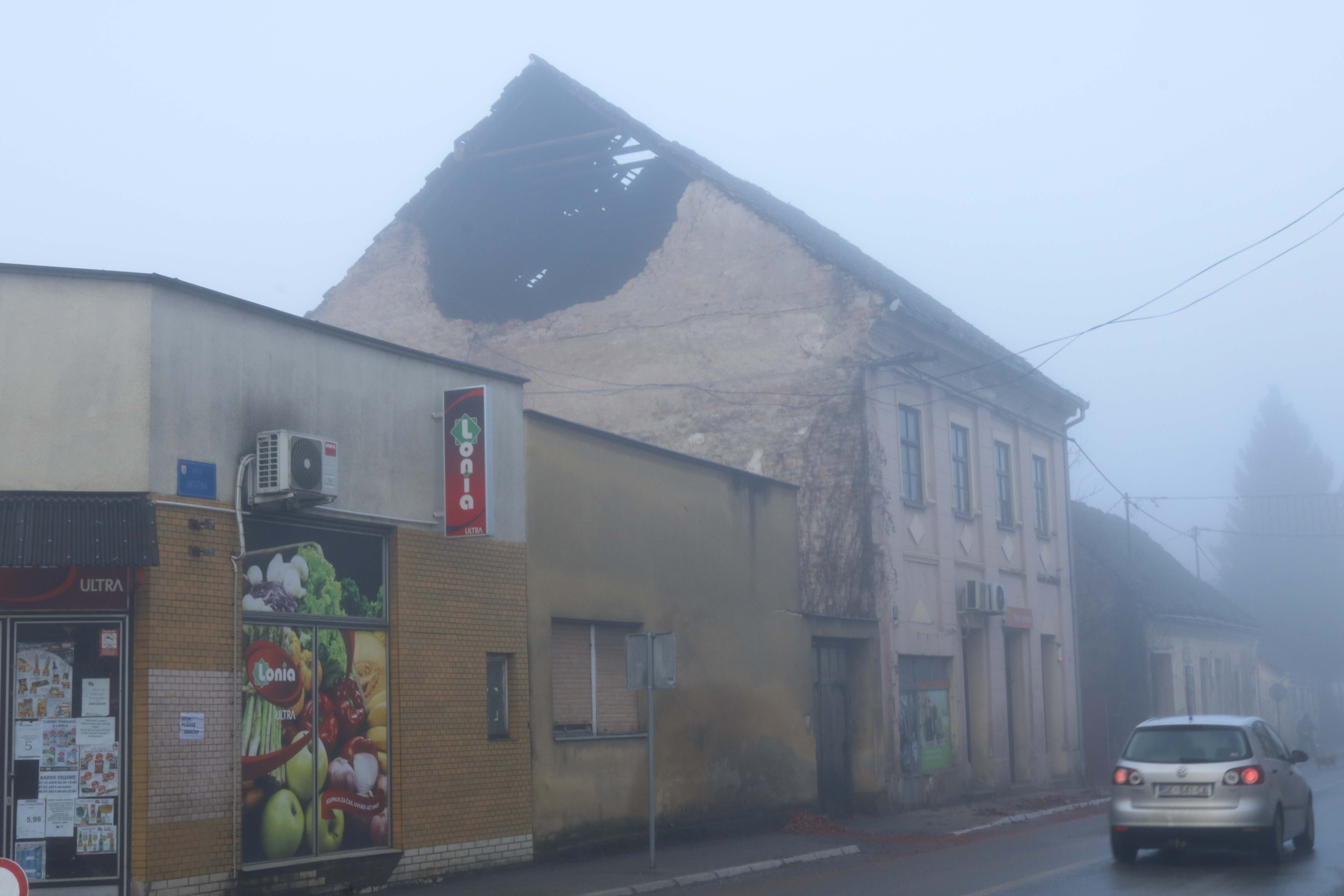
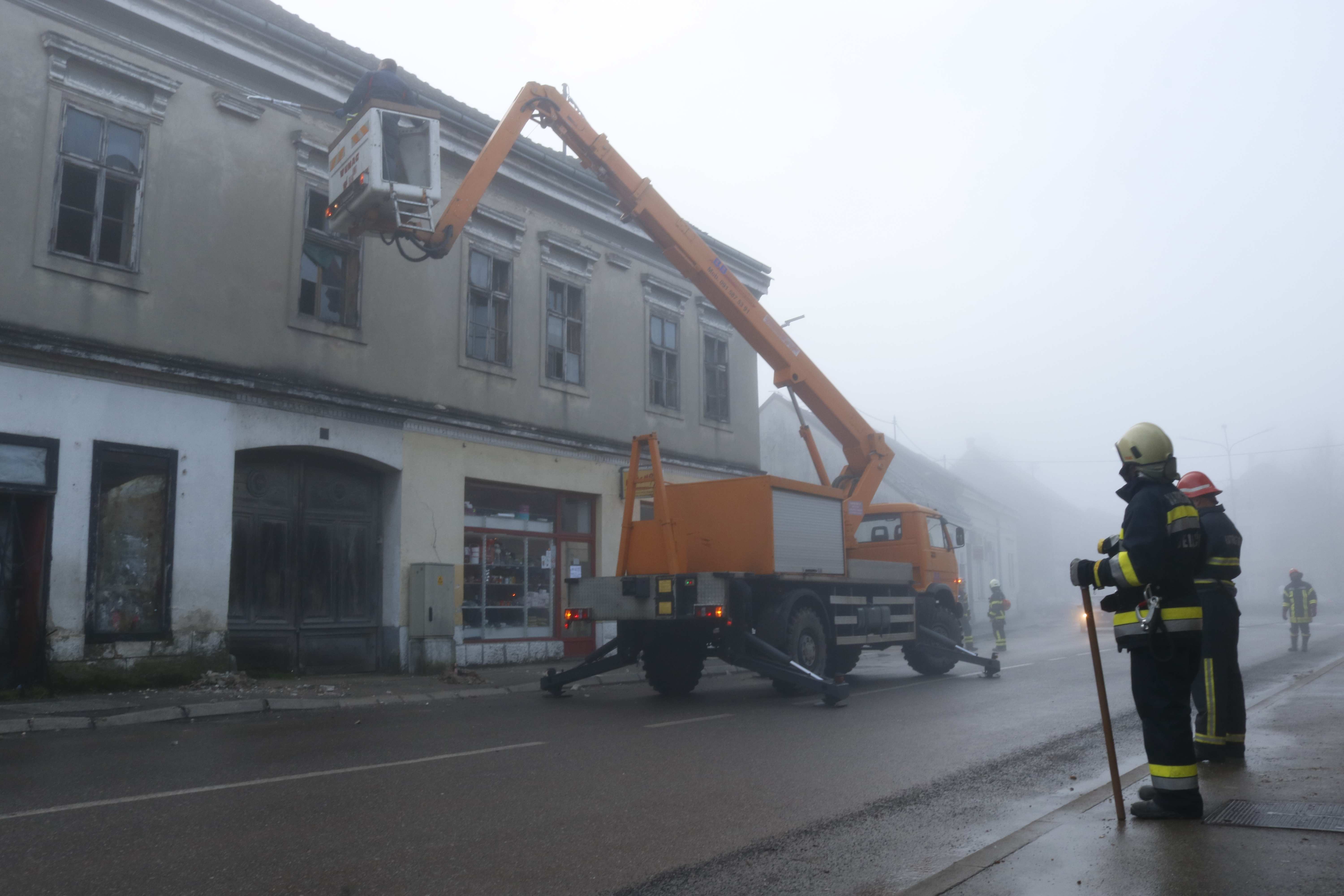
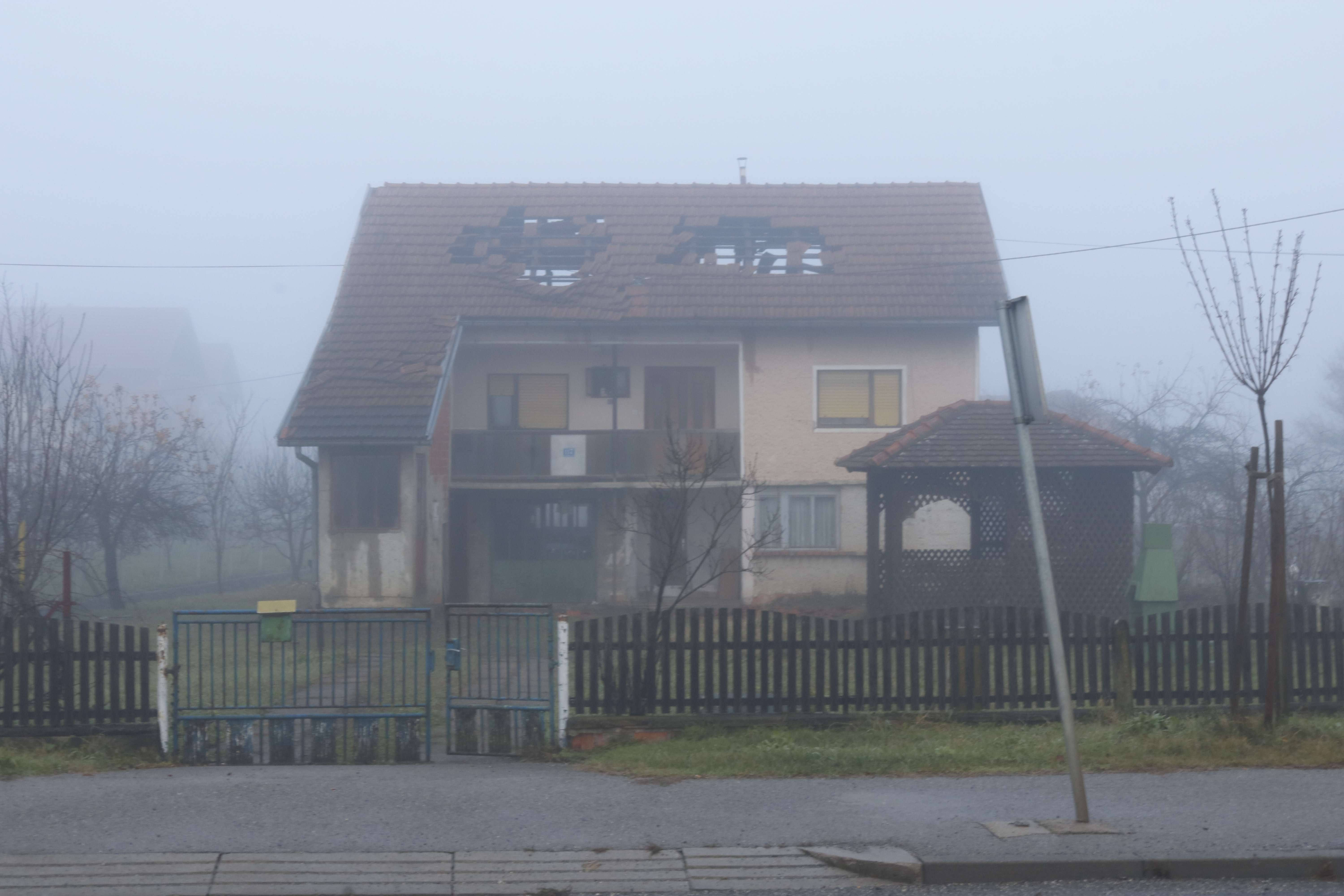
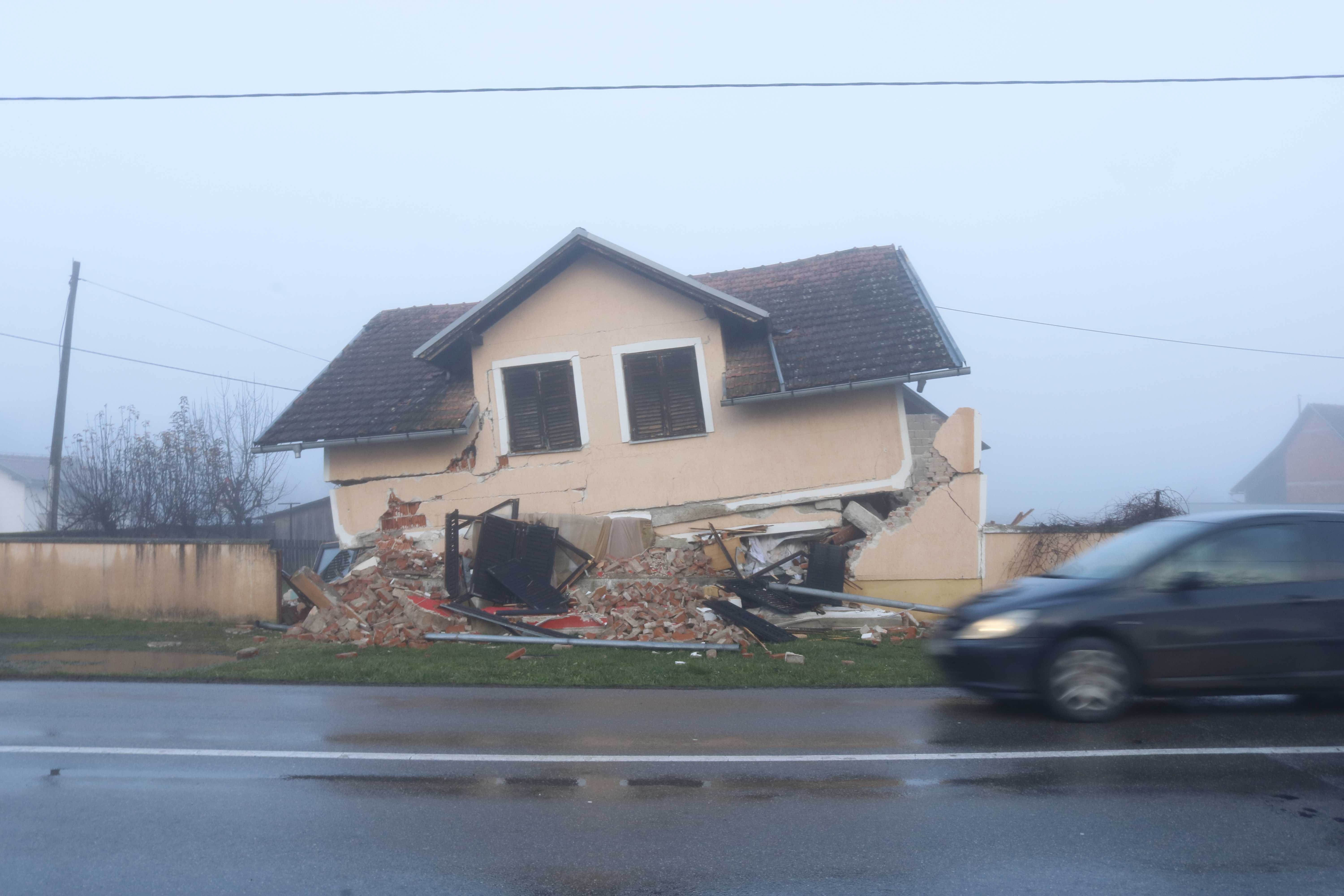
The entire upper floor of this house had collapsed, crushing completely the floor underneath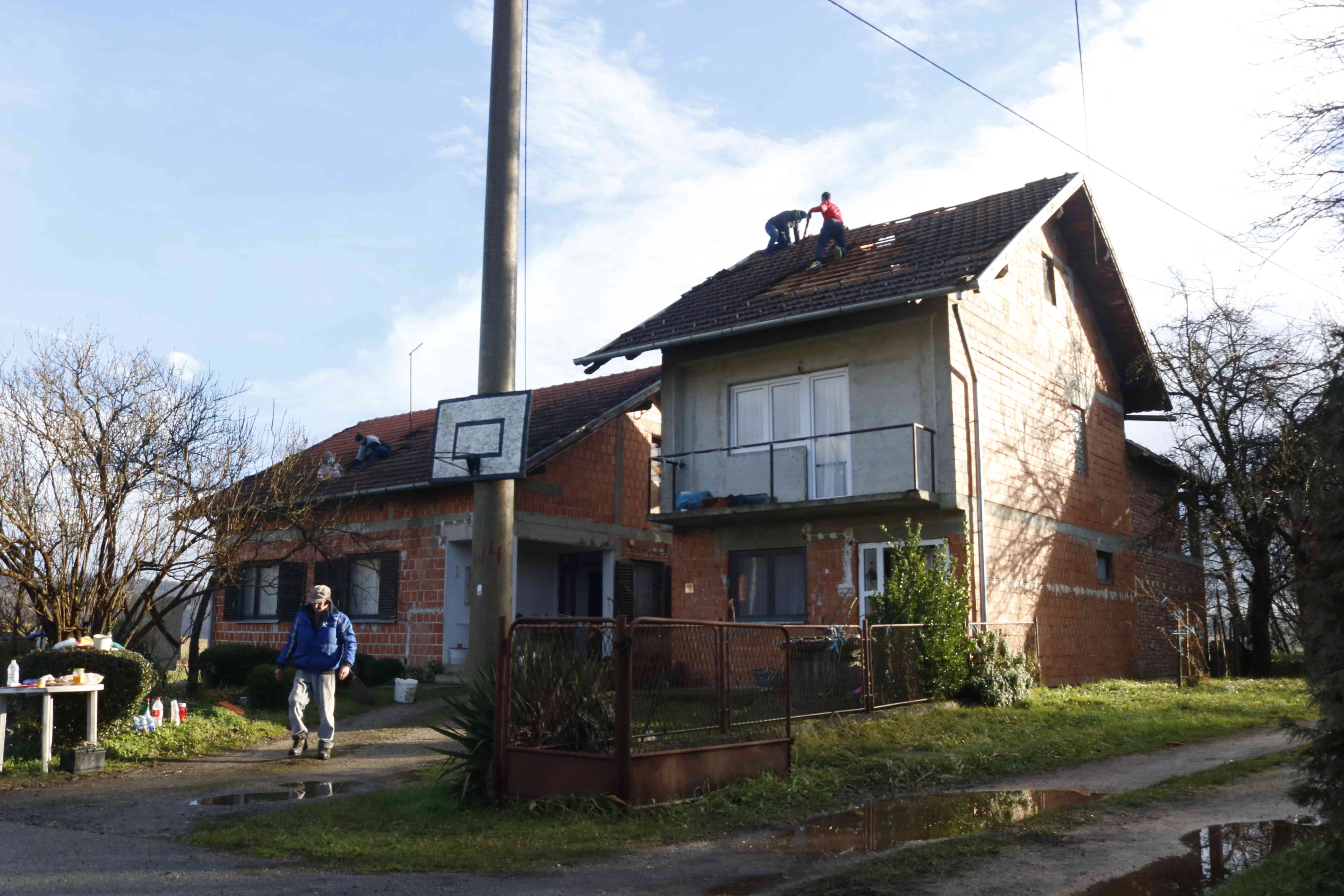
Volunteers at work on the roofs of two neighbouring houses, between Glina and Petrinja one day after the earthquake. The volunteers had come from all over Croatia
Petrinja one day after the earthquake

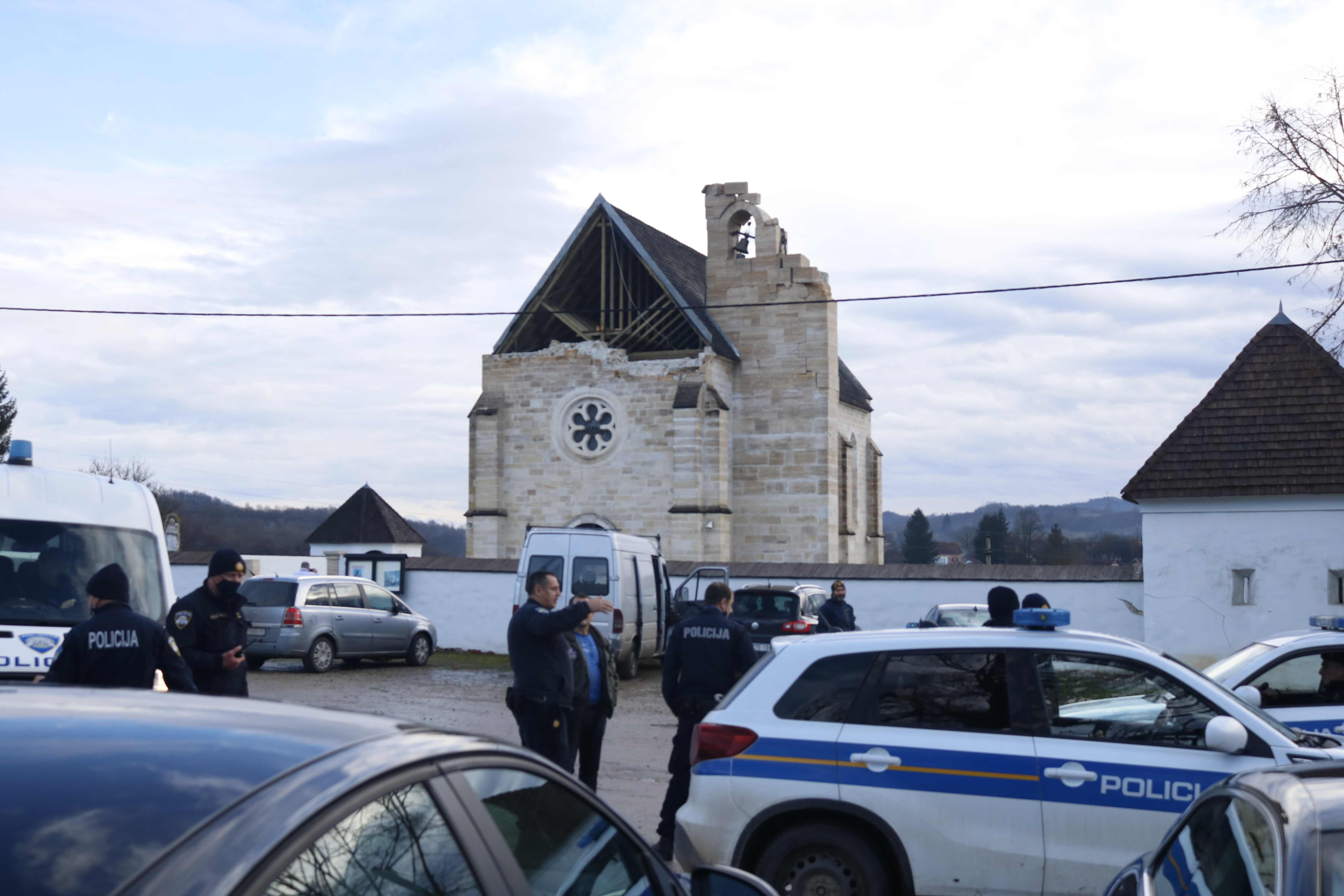
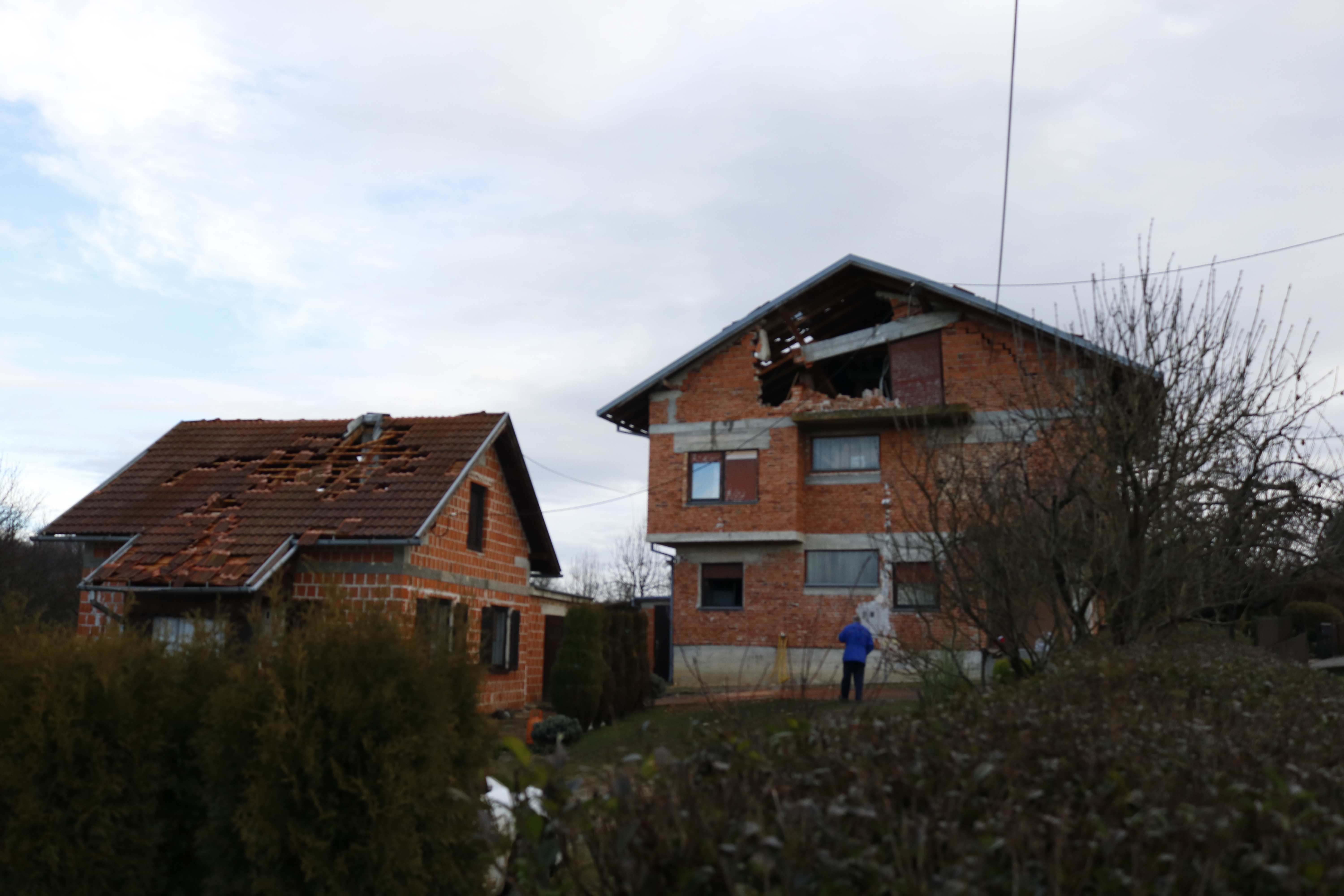
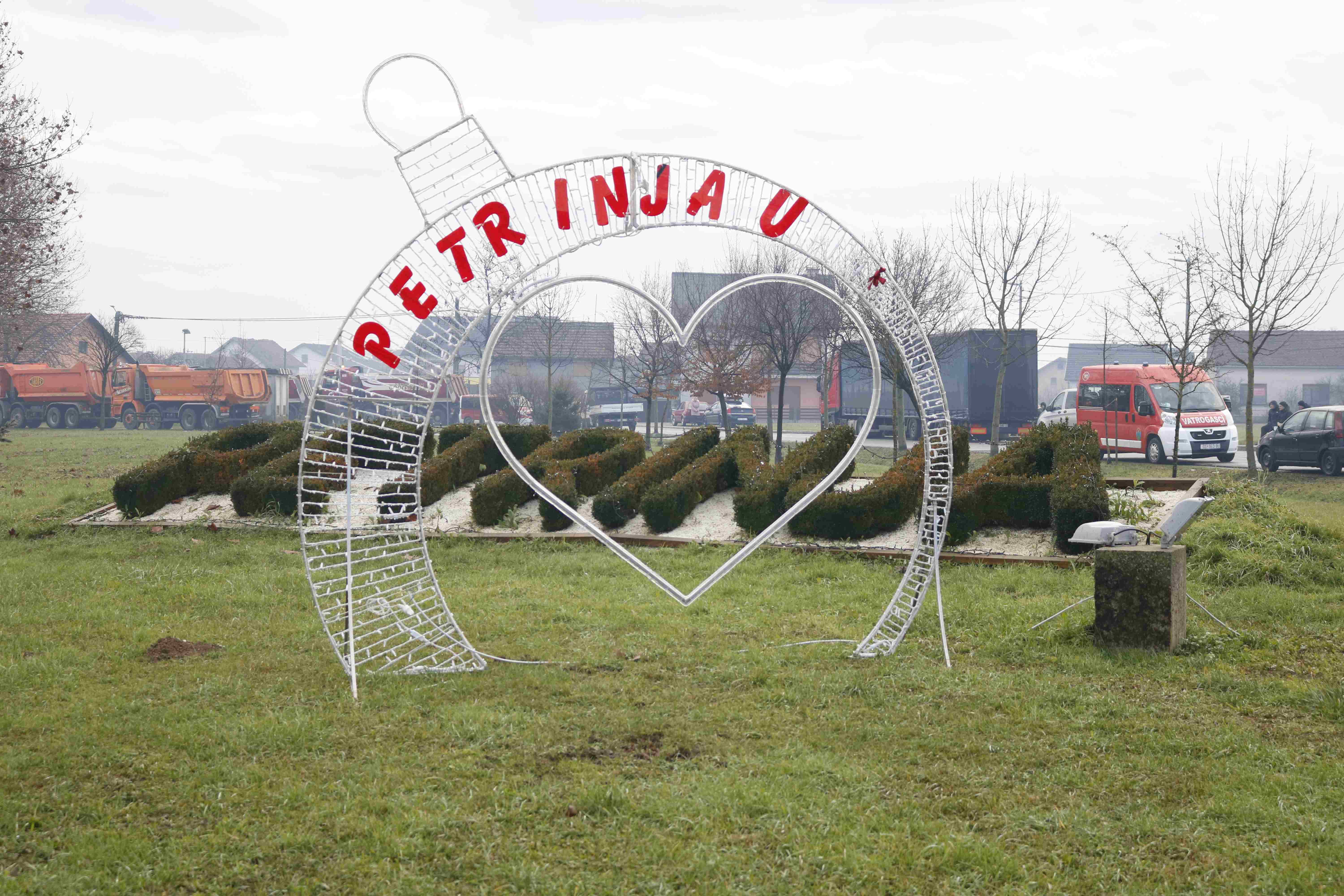
Even in the miserably wet winter weather, the greeting sign to Petrinja one day after the earthquake might still have looked cheery, if you couldn't see all the emergency vehicles in the background. 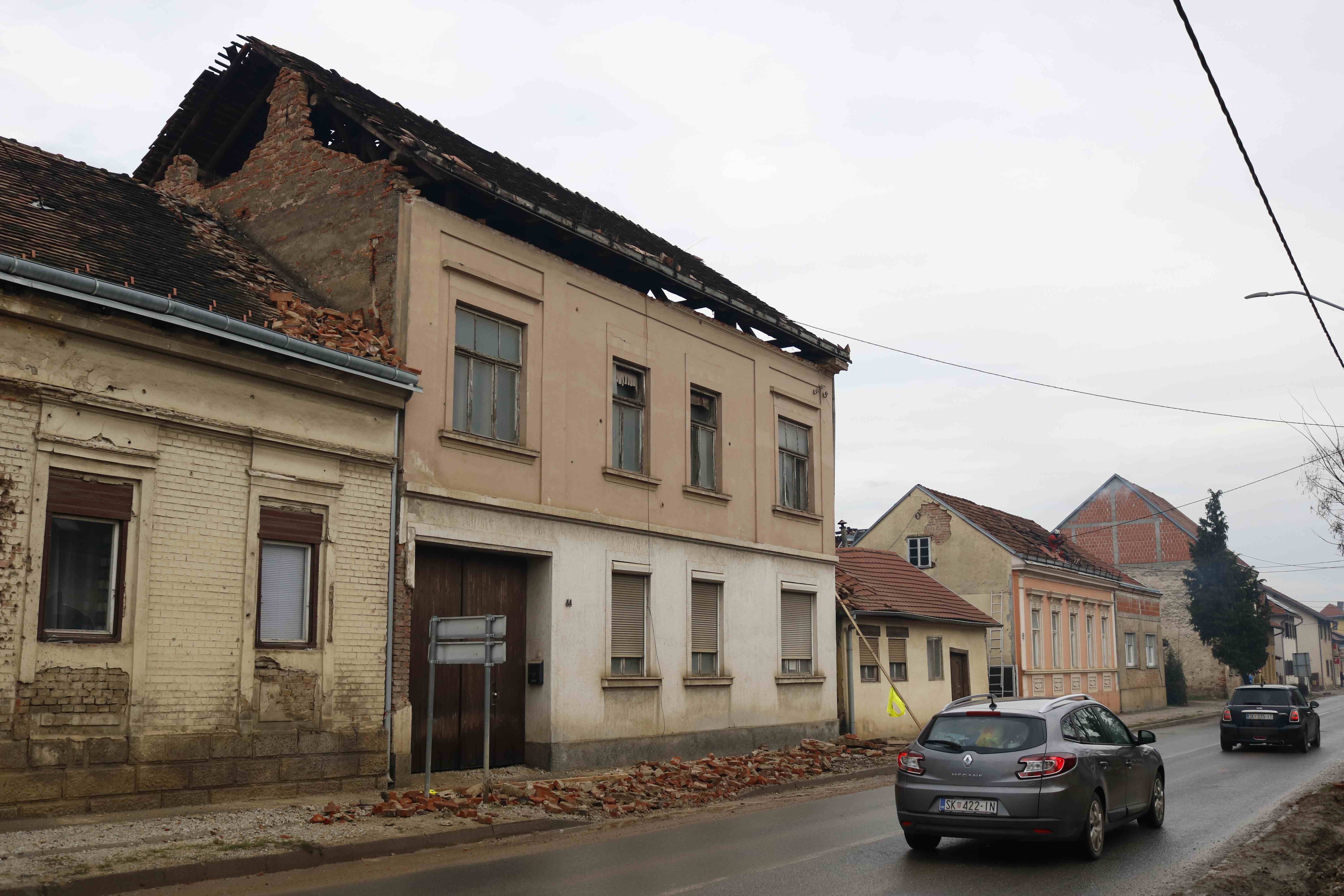
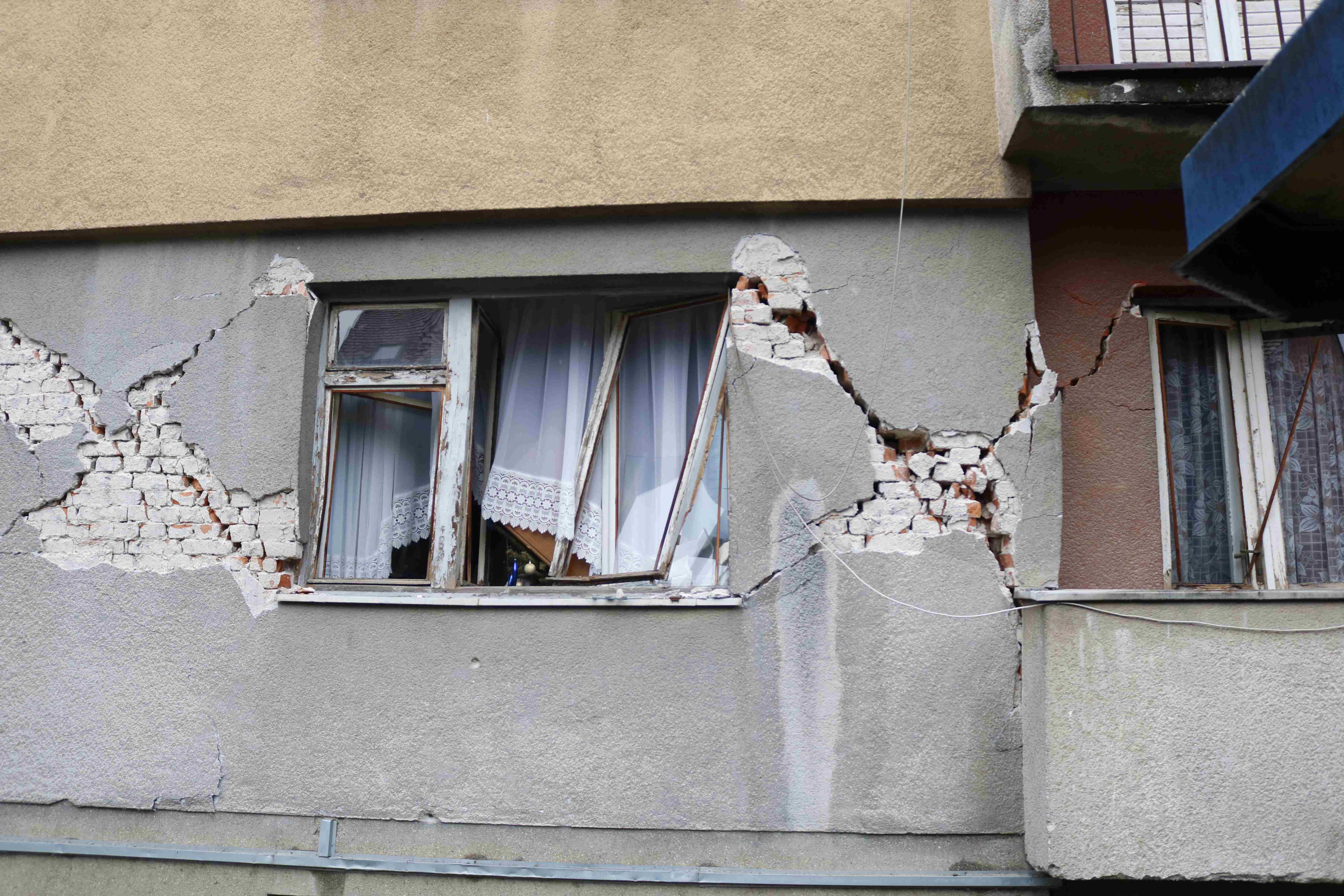

If you didn't know any better, these might look like damaged derelict buildings. But, 24 hours earlier, these had been a row of thriving storefronts, right in the centre of Petrinja one day after the earthquake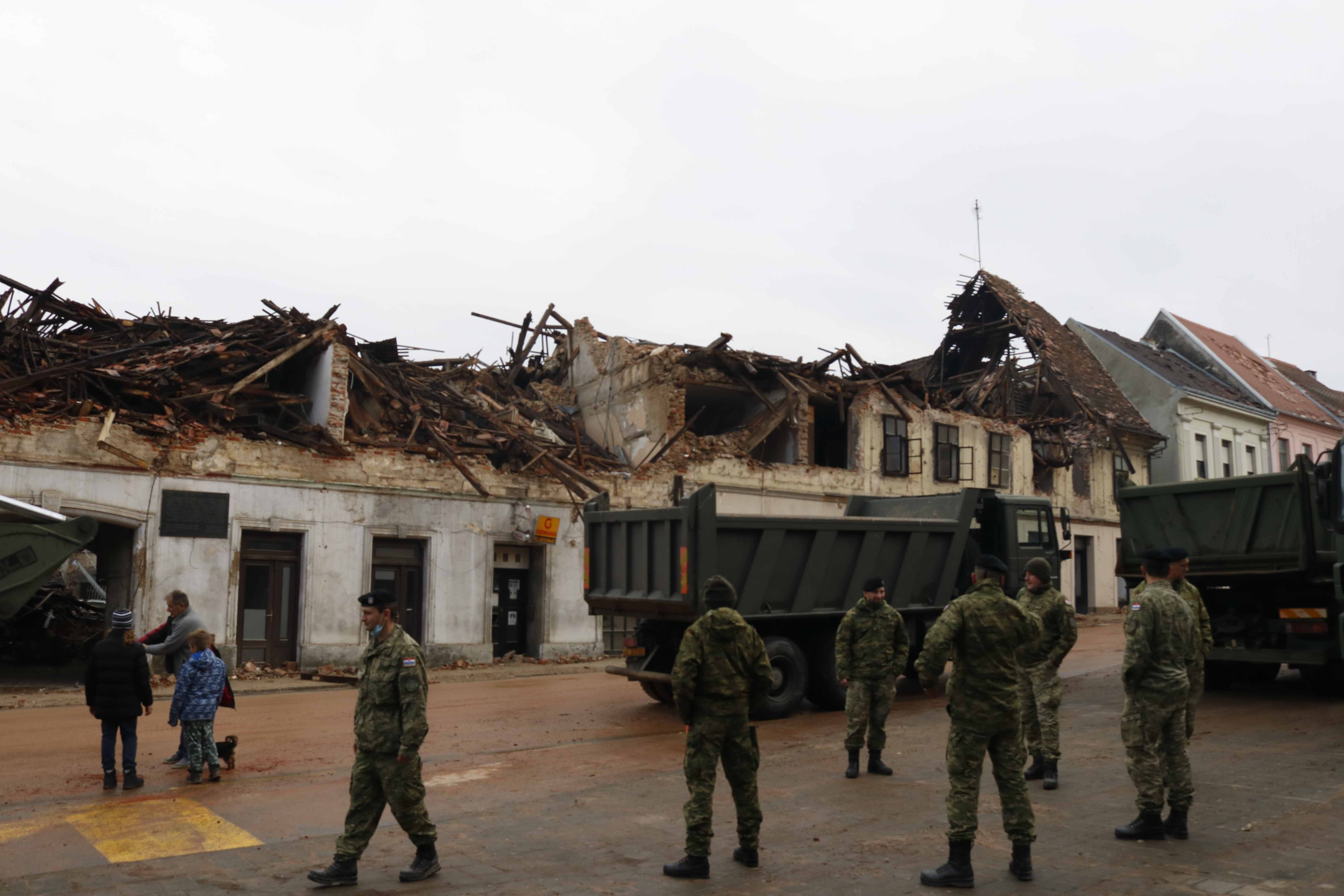
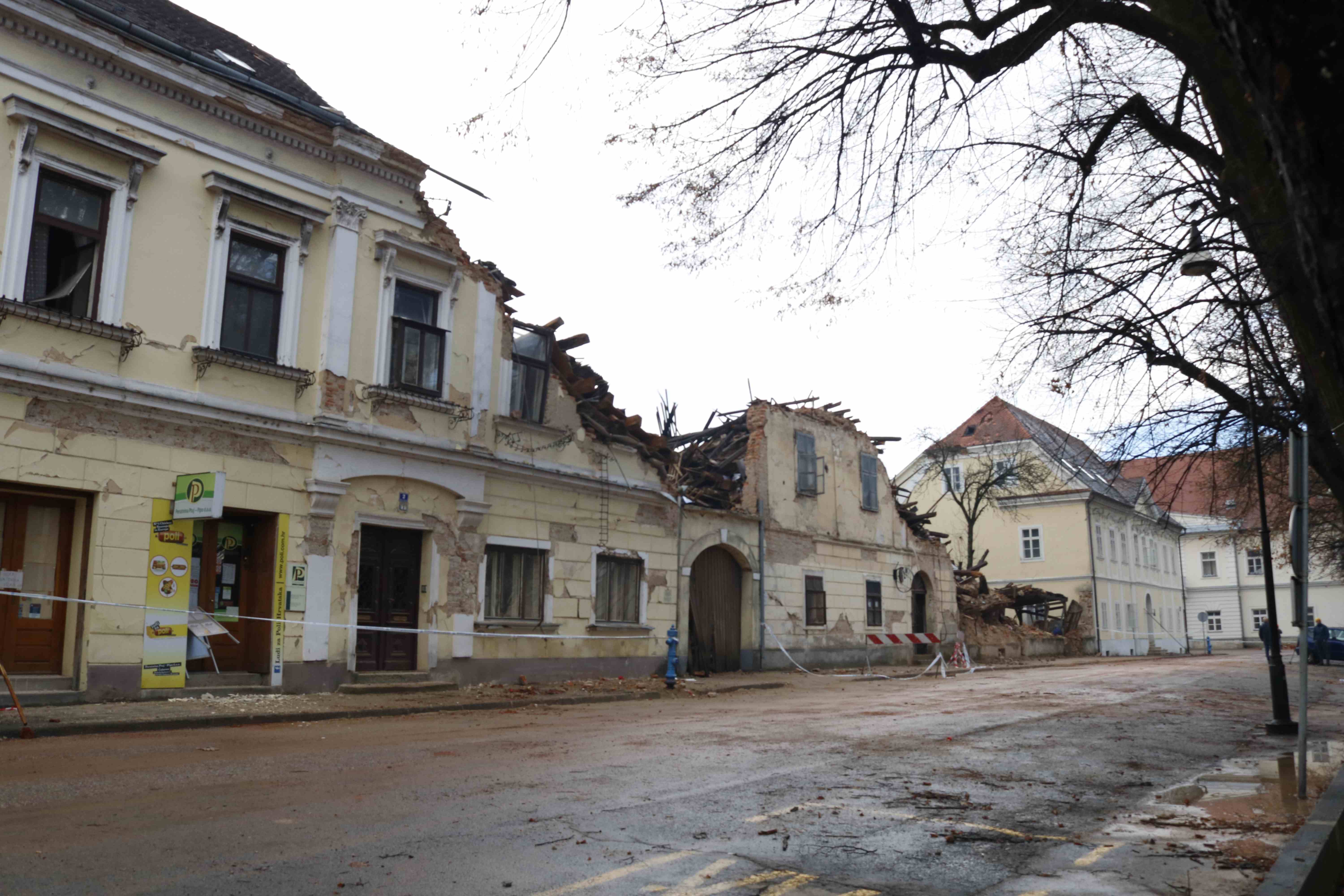
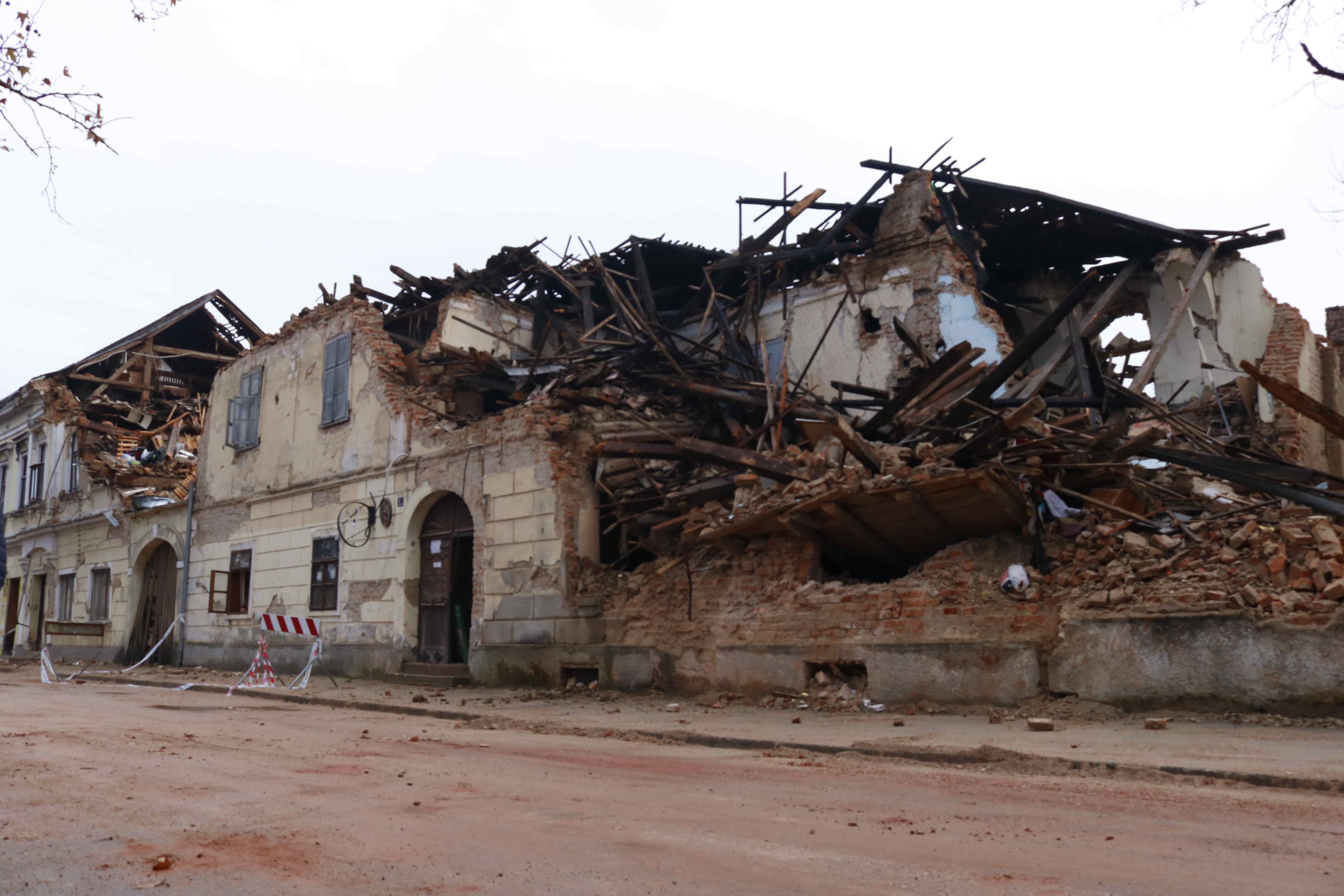
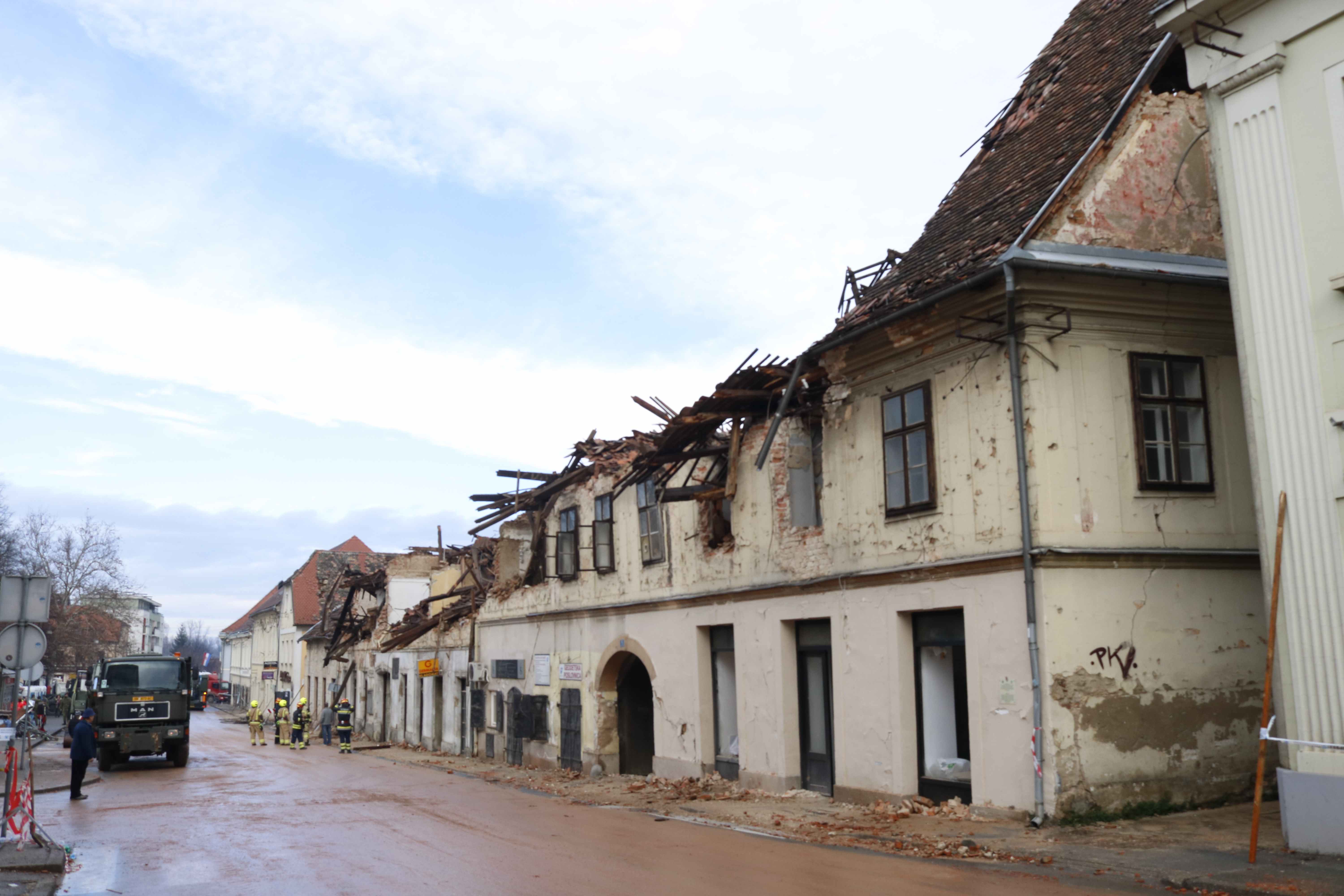
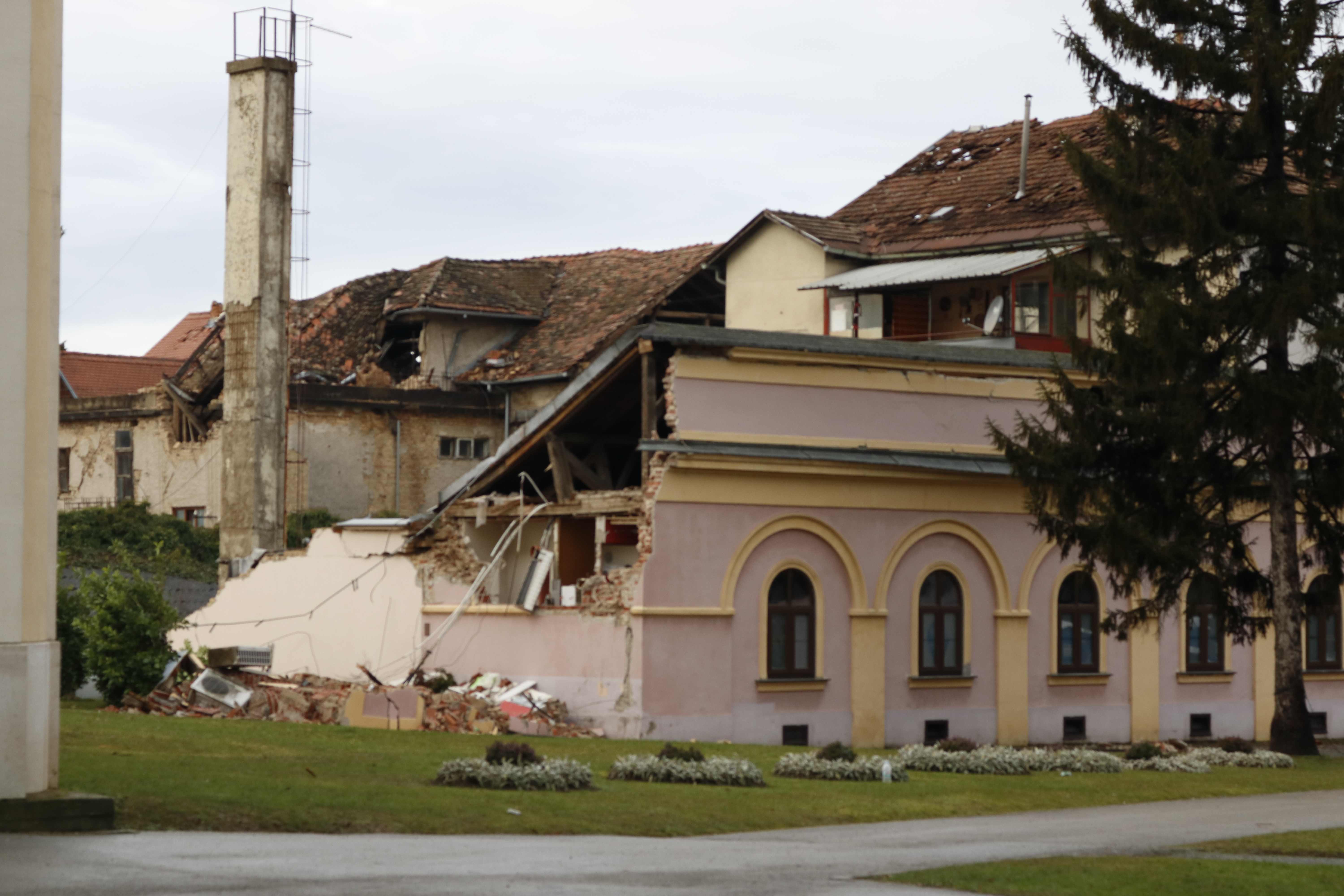
Sisak

Damage to the train station in Sisak. A considerably larger city than Petrinja one day after the earthquake, not one business we passed was working - no supermarkets, no fast-food restaurants. Nothing. Groups of teenagers roamed the streets with nothing to do and nowhere to go
Zazina

The Parish church of St. Nikola and Vida, Žažina near Petrinja one day after the earthquake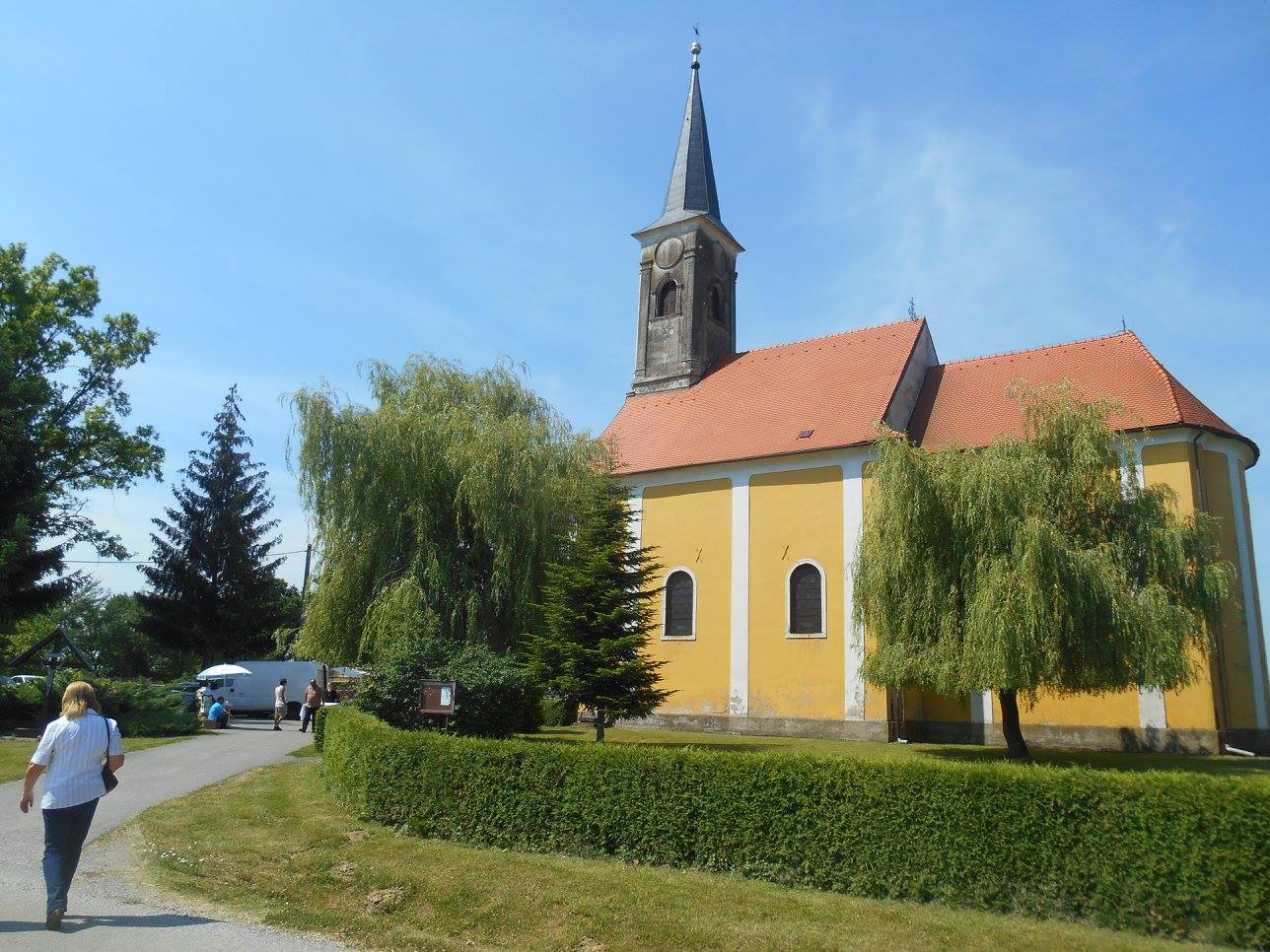
This is how the church had looked just one day earlier. A couple of metres from the church, remnants of the fire that parishioners had gathered around on Badnjak (Christmas Eve). We later learned that the church organist had been cleaning the organ when the earthquake struck, and tragically he was killed. 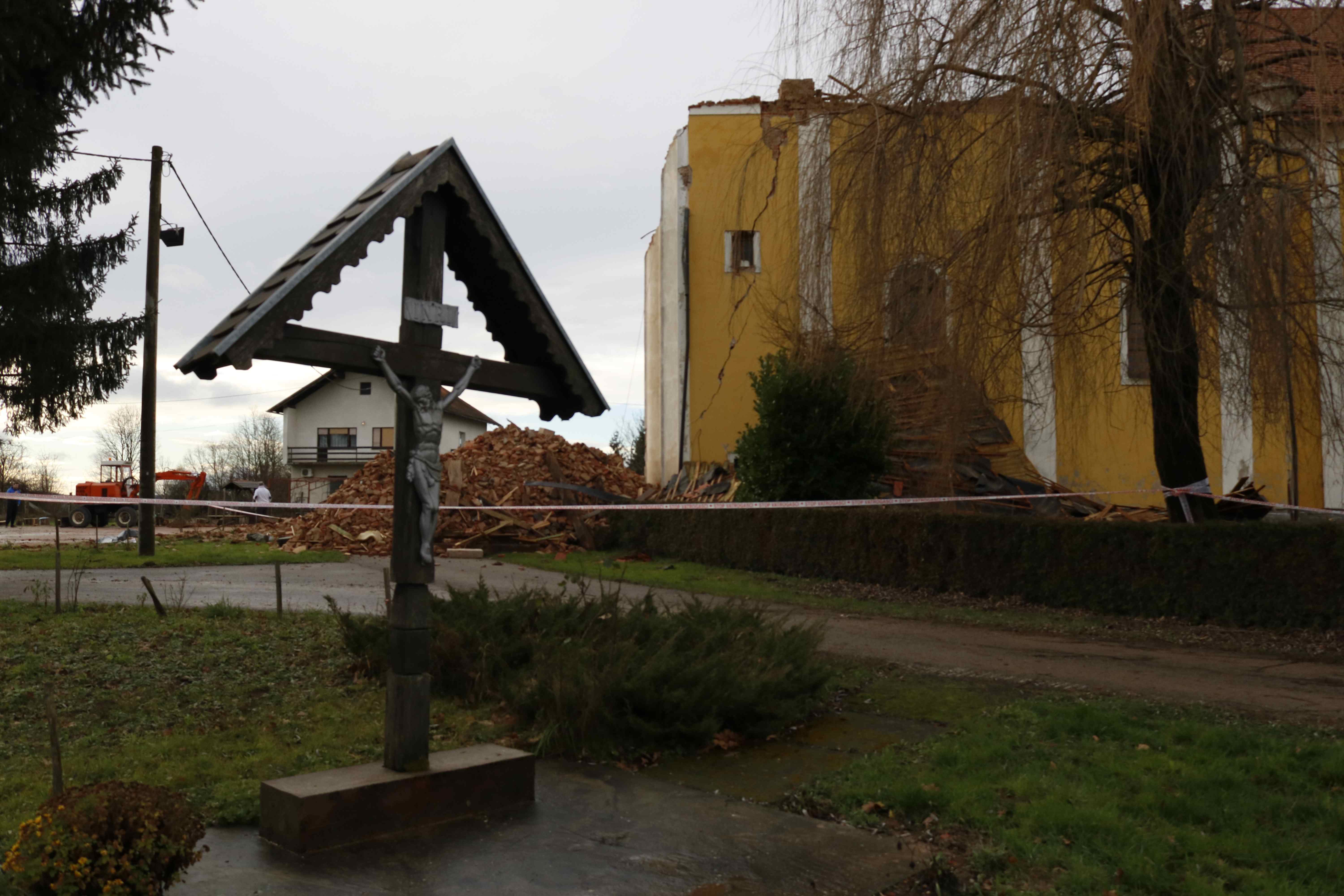
Photo of the Parish church of St. Nikola and Vida, Žažina courtesy of the church, all other photos © Marc Rowlands
Are These Four Croatian Cities Most Vulnerable to Earthquakes?
The recent earthquake down in Albania came as a shock to everyone, and it was felt across Dalmatia, with residents of the Croatian cities of Dubrovnik to Zadar reporting having felt its effects. On top of that, an earthquake also struck Blagaj, near Mostar in neighbouring Bosnia and Herzegovina, which was also felt strongly in Dalmatia.
As Poslovni Dnevnik writes on the 29th of November, 2019, with earthquakes striking very close to home, we really can't be sure when the next time Croatia will be hit really hard by Mother Nature. Which Croatian cities are the most vulnerable of all?
Two years ago, the Croatian Crisis Management Association published a very interesting account on the Croatian cities of Zagreb, Split, Rijeka and Dubrovnik in terms of their respective risk of earthquake casualties, Express reports.
According to the reportsl, the Croatian capital of Zagreb would take quite the hit indeed, at least in its very centre, Split is a surprising case as it is intersected by what have been deemed by the report to be high risk zones, and Rijeka and Dubrovnik, which was totally destroyed back in 1667, when 5,000 of its residents were killed - are also at a somewhat higher risk.
The seismic situation of Croatia and neighbouring Bosnia and Herzegovina is such that the most frequent earthquakes are along the Kvarner coastline, along the Dalmatian Hinterland, between Zadar and Šibenik, around the islet of Jabuk, and especially on the southern Dalmatian islands and throughout Herzegovina. This part of the story is directly related to Croatia's neighbour to the south, Montenegro, and its neighbour to the south, the recently hit Albania. Sources cite an article by students of the Surveying and Mapping Authority which is located in Zagreb.
In spite of all this detailed information, we cannot be truly sure when the next time in Croatia will be hit hard by an earthquake. We can however be certain that at some point in time, it will be. We can also be sure of which Croatian cities in particular a stronger earthquake than those we typically experience is most likely to strike, Express reports.
Make sure to follow our dedicated lifestyle page for much more.
Preparedness 2019: Earthquake Stimulation Exercise Held in Konavle
Following the recent and tragic earthquake which struck nearby Albania, and which was felt quite strongly across Dalmatia, from Dubrovnik all the way up to Zadar, an exercise called Preparedness 2019 was held in Croatia's southernmost municipality of Konavle, which lies just south of the City of Dubrovnik and right next to the Montenegrin border.
The fact that Preparedness 2019 was held precisely in Konavle is not only meaningful because of its geographical location, being in the extreme south of the country and close to tiny Montenegro which of course borders Albania, where the epicentre of the recent earthquake was located, but because Dubrovnik and its surrounding areas have always been vulnerable to earthquakes in the past.
A devastating earthquake struck Croatia's southernmost city way back in 1667, and the entire city was totally destroyed and around 5,000 residents tragically lost their lives.
As Morski writes on the 28th of November, 2019, the Civil Protection Headquarters of Dubrovnik-Neretva County held the staff-command exercise, called Preparedness 2019, in the gorgeous rolling hills of Konavle. The exercise was attended by the chiefs of civil defense staff of the City of Dubrovnik and the municipalities of Župa Dubrovačka (Parish of Dubrovnik) and of course the Konavle Municipality.
The topic of the Preparedness 2019 exercise was the engagement and coordination of civil protection operational forces in the event of an earthquake hitting Dubrovnik-Neretva County once again, and according to the played out scenario of this particular exercise, the wider Dubrovnik area would be affected, with the epicentre of the potential earthquake being in Konavle.
The objective of the exercise was to test the capabilities of the local civil protection operations forces should such an incident occur in the area, to see how their activation is, and to further enhance the forces' overall familiarisation with the planning documents in the field of civil protection.
Make sure to follow our dedicated lifestyle page for much more.


